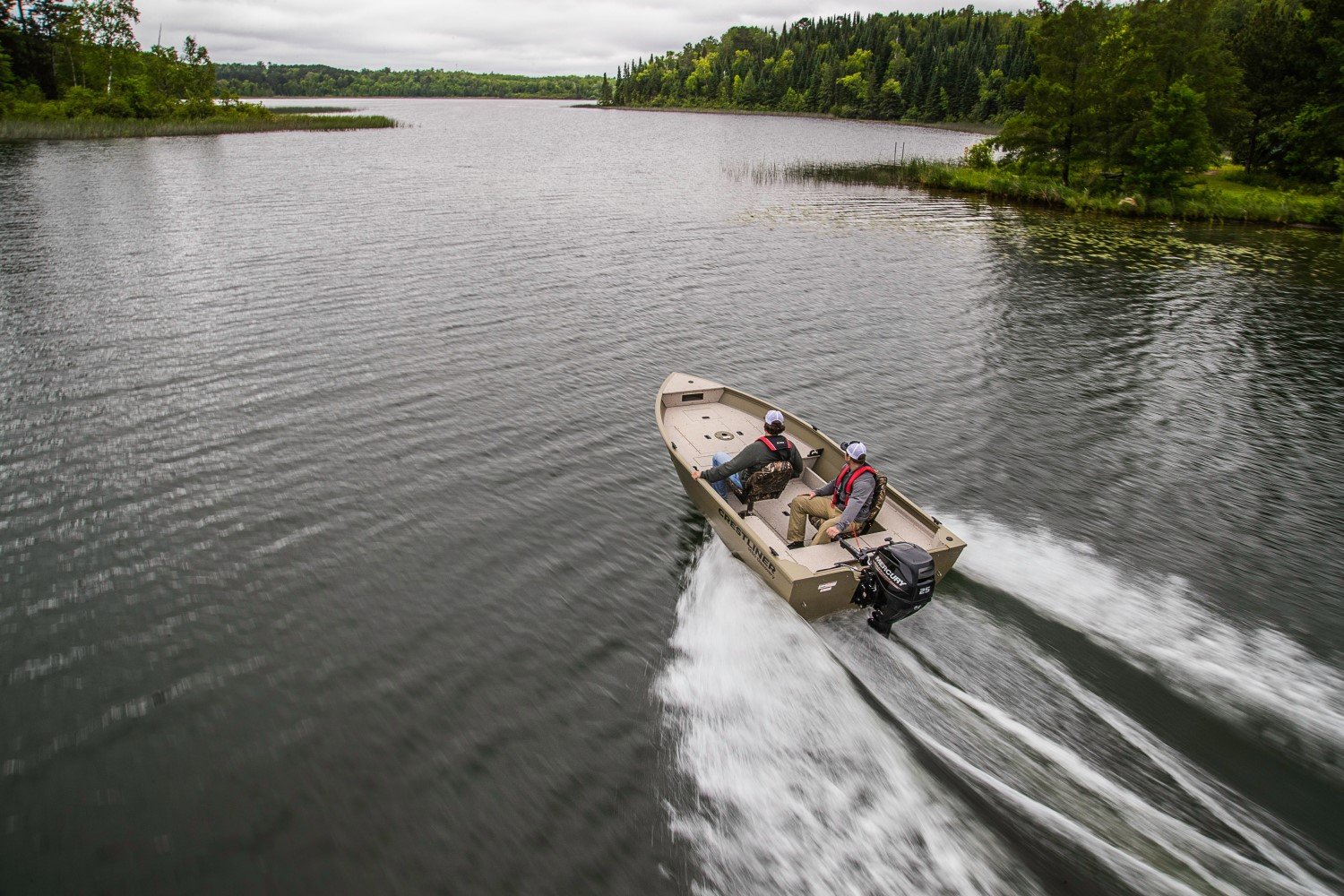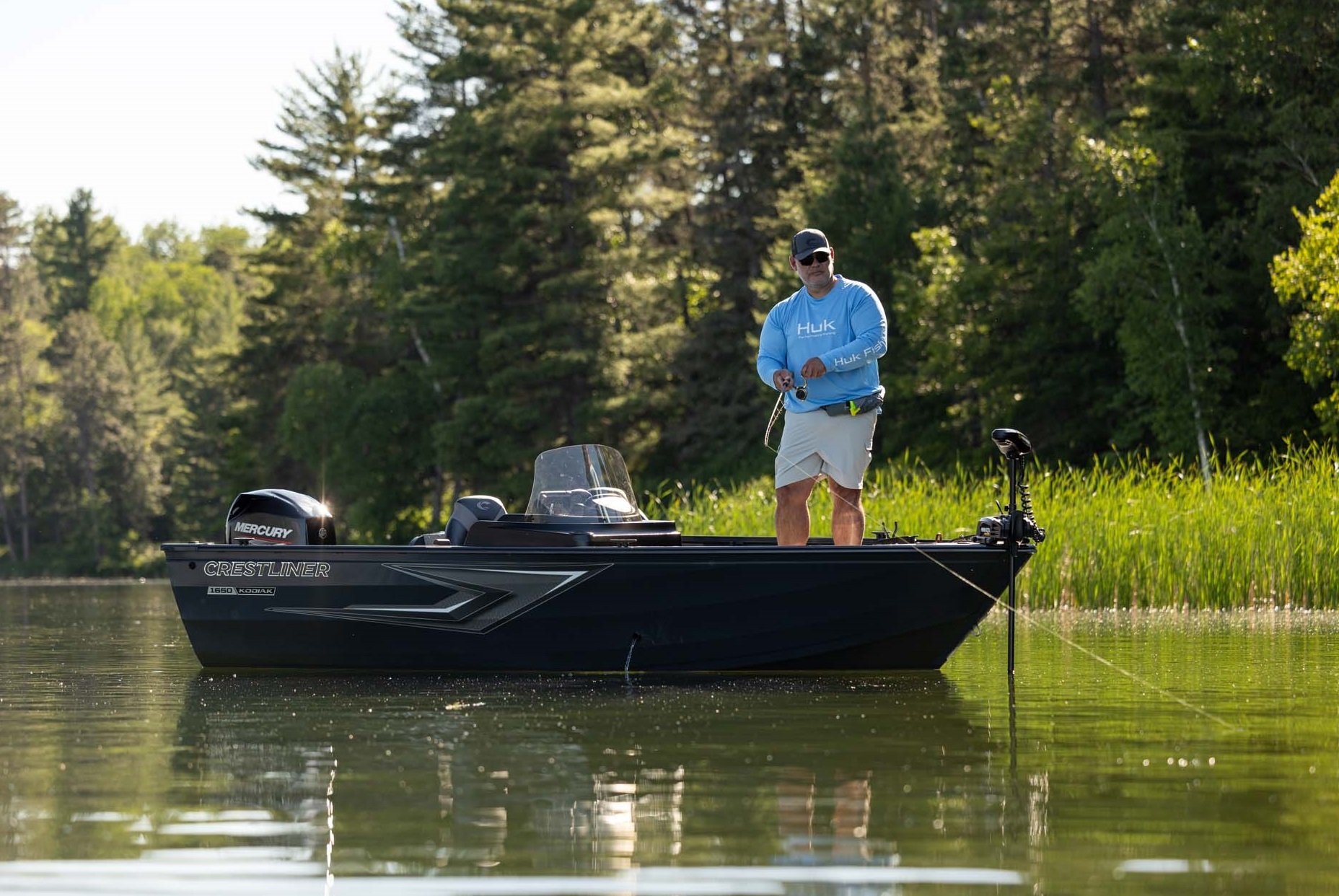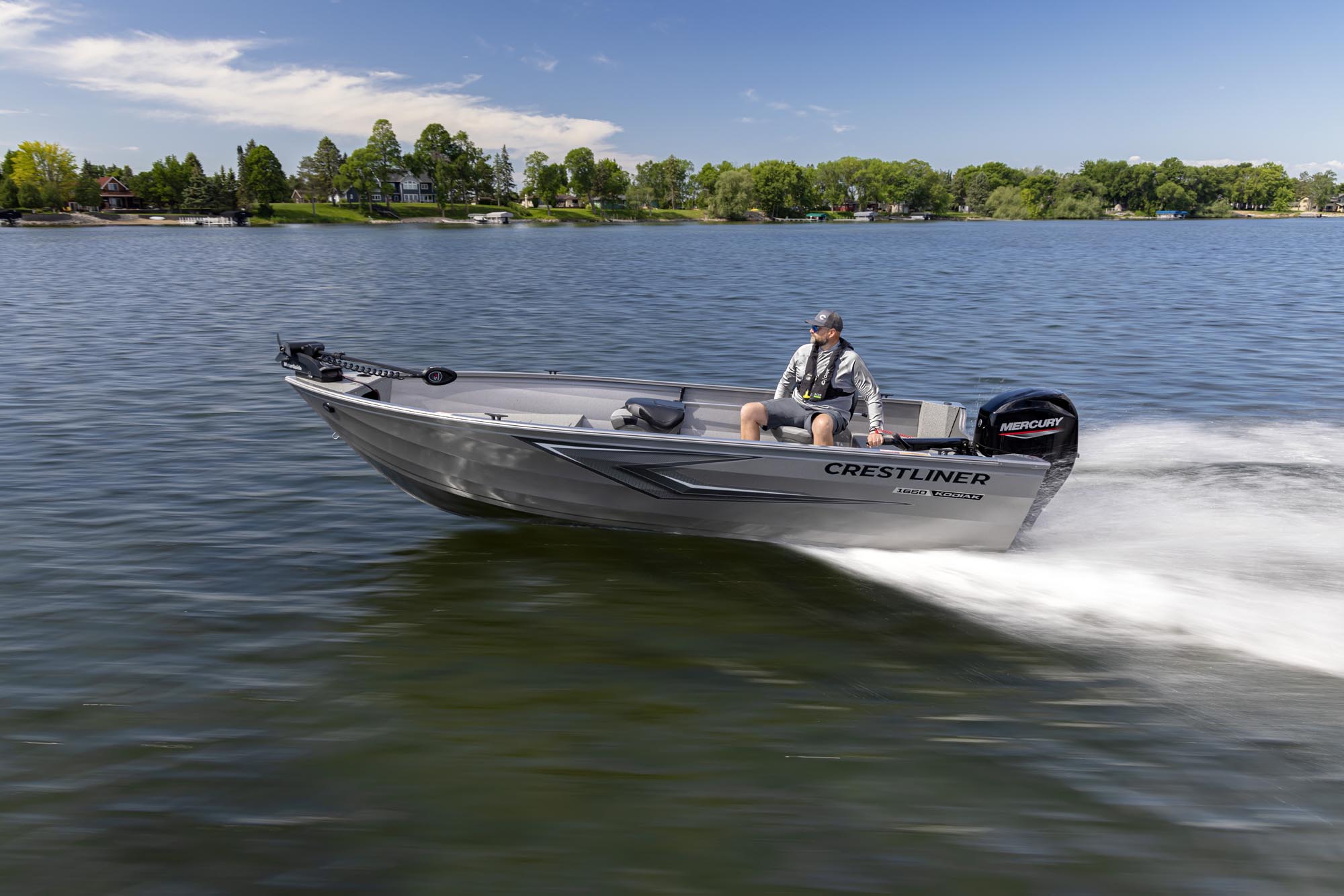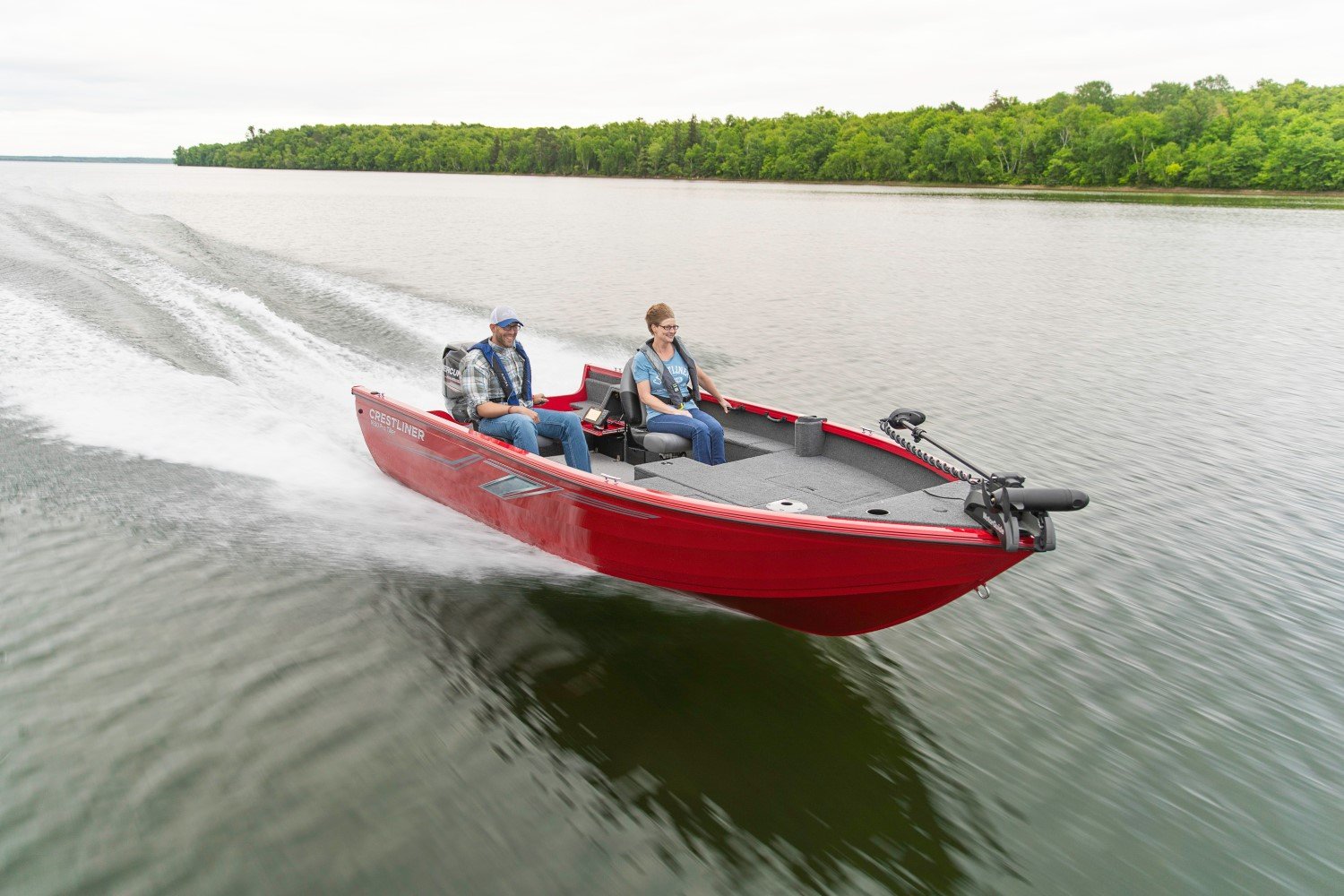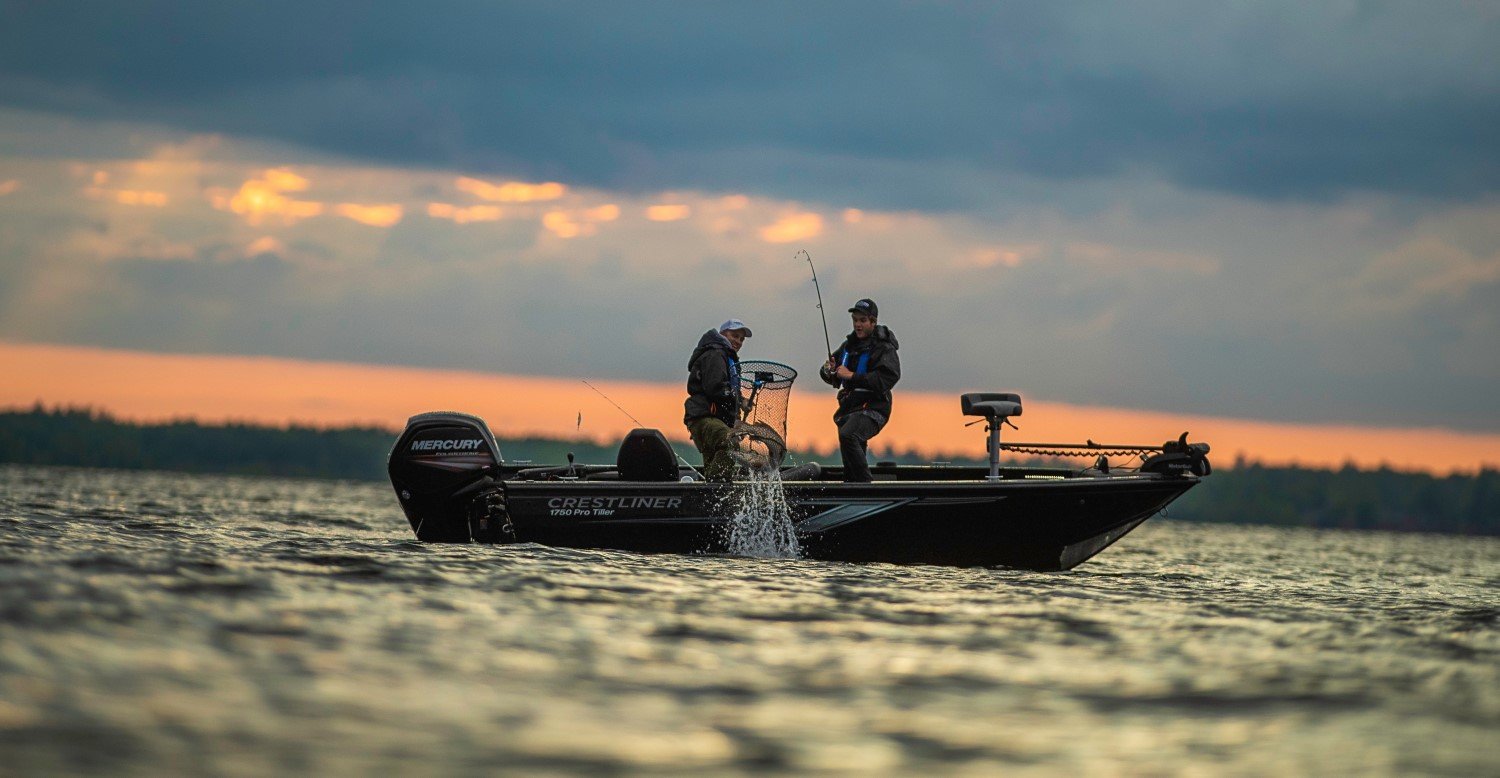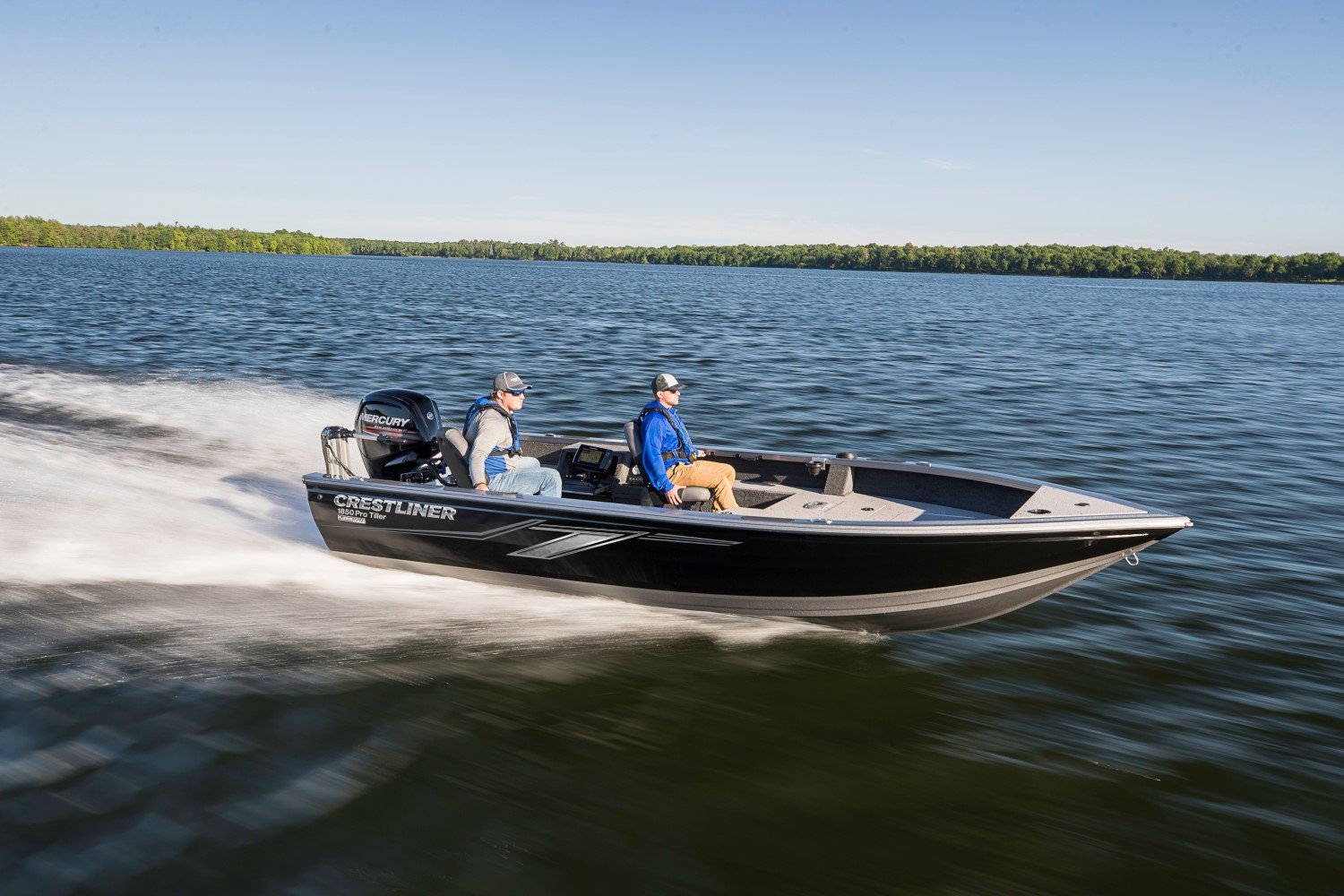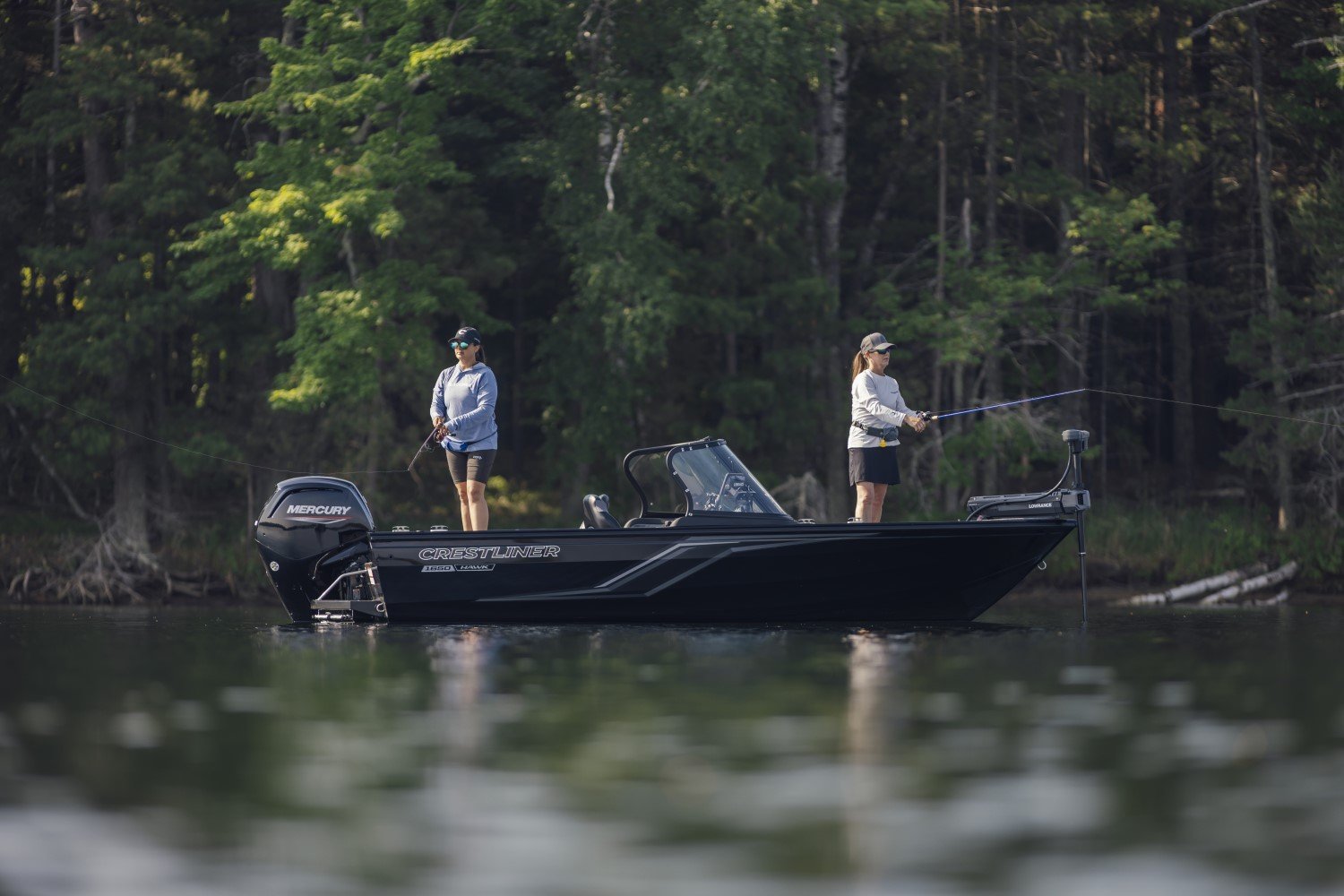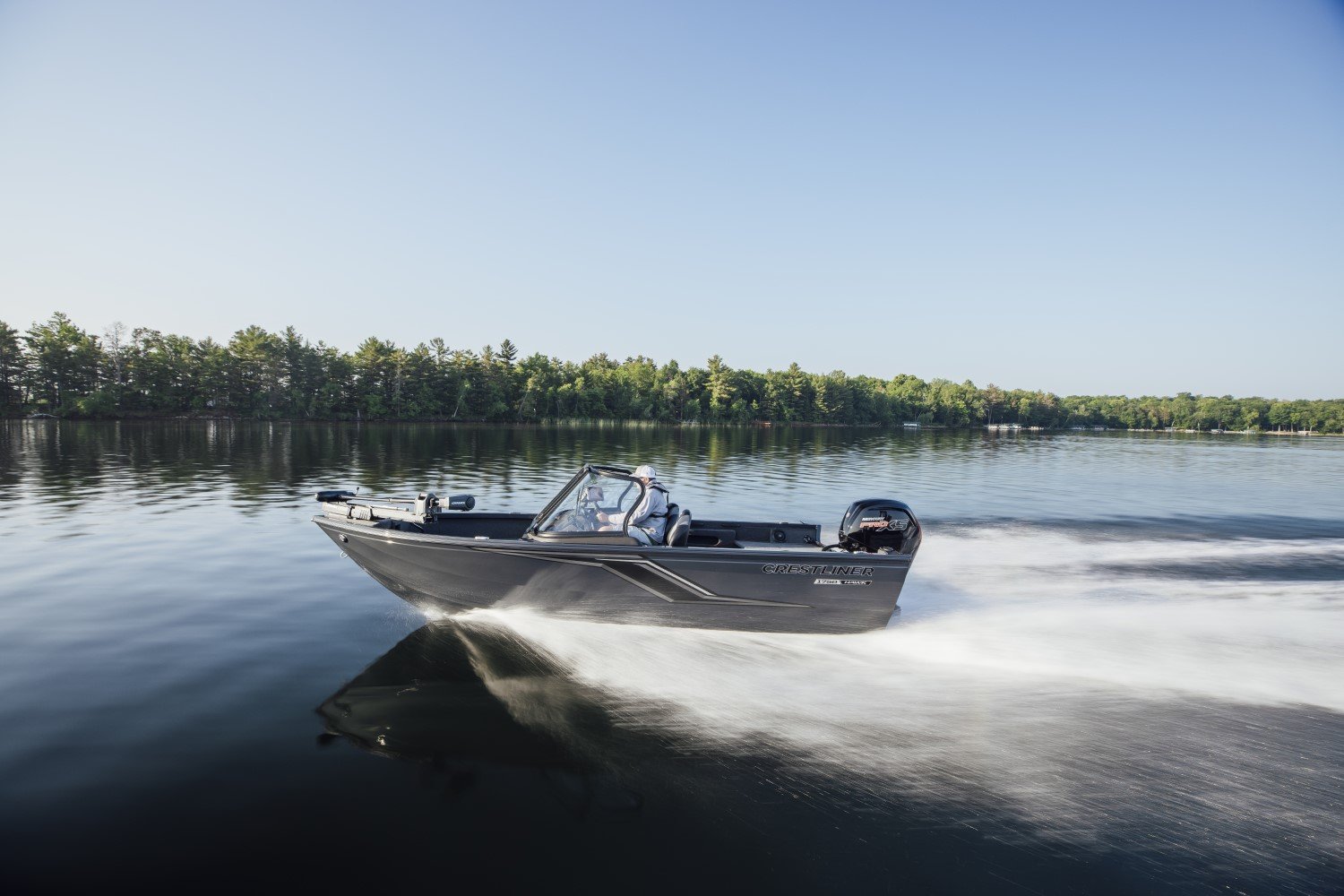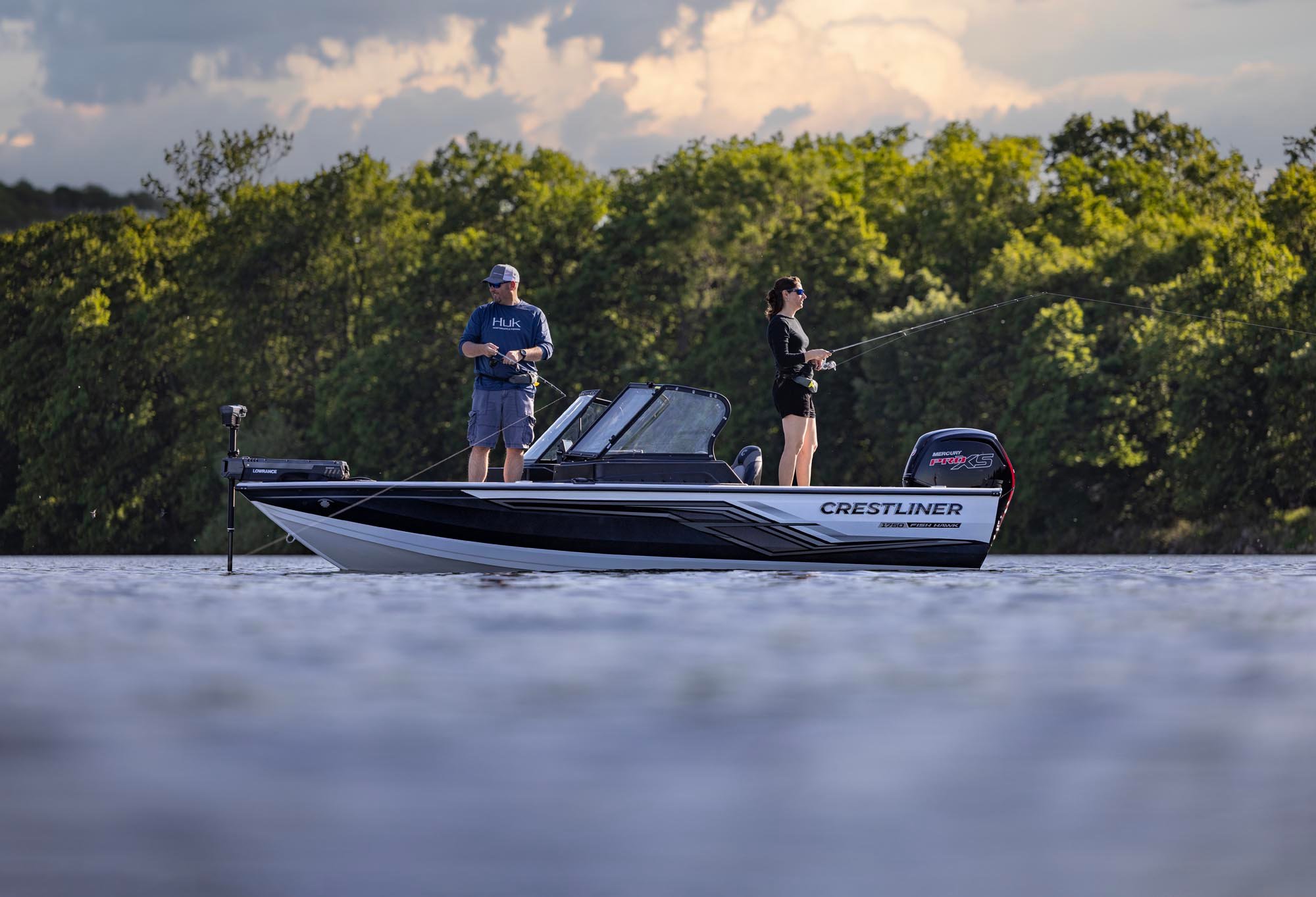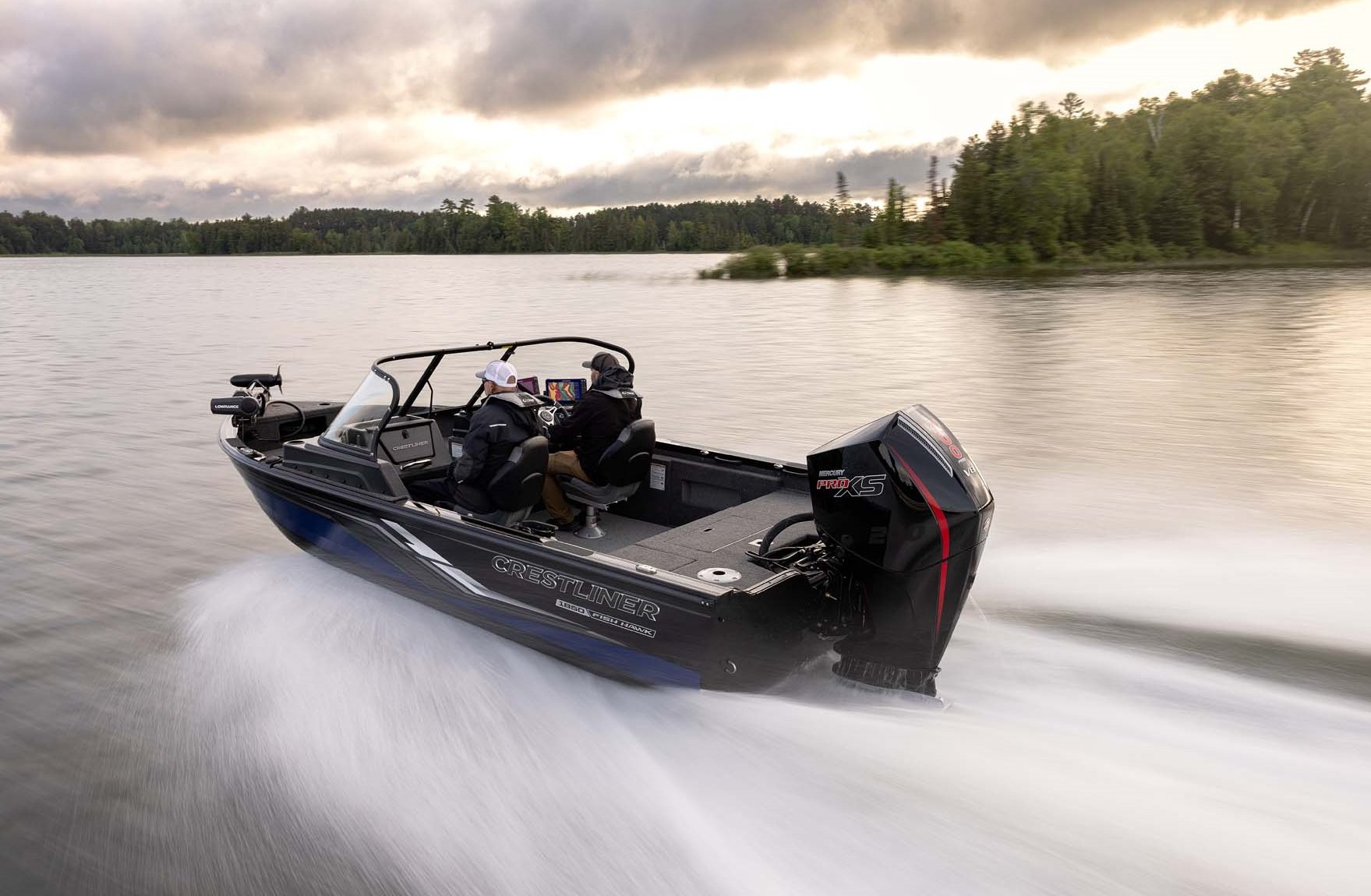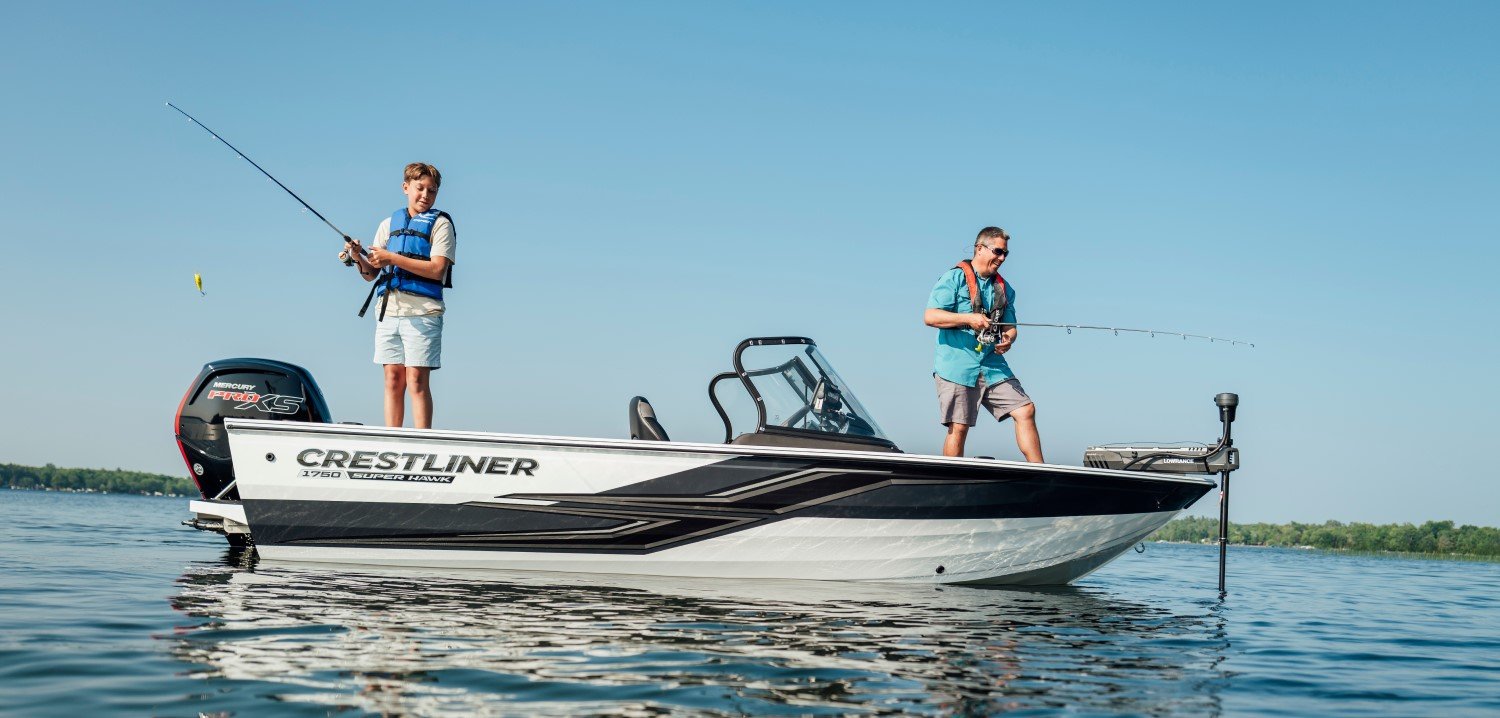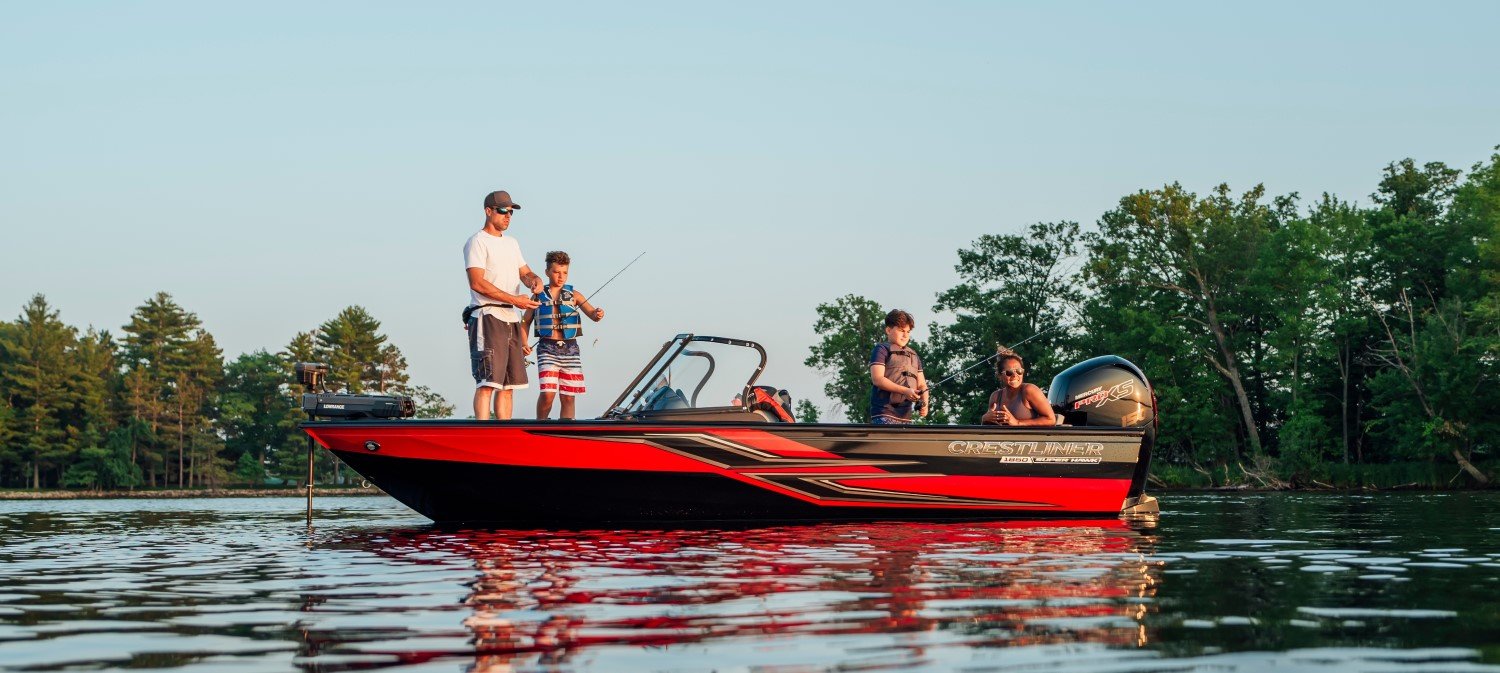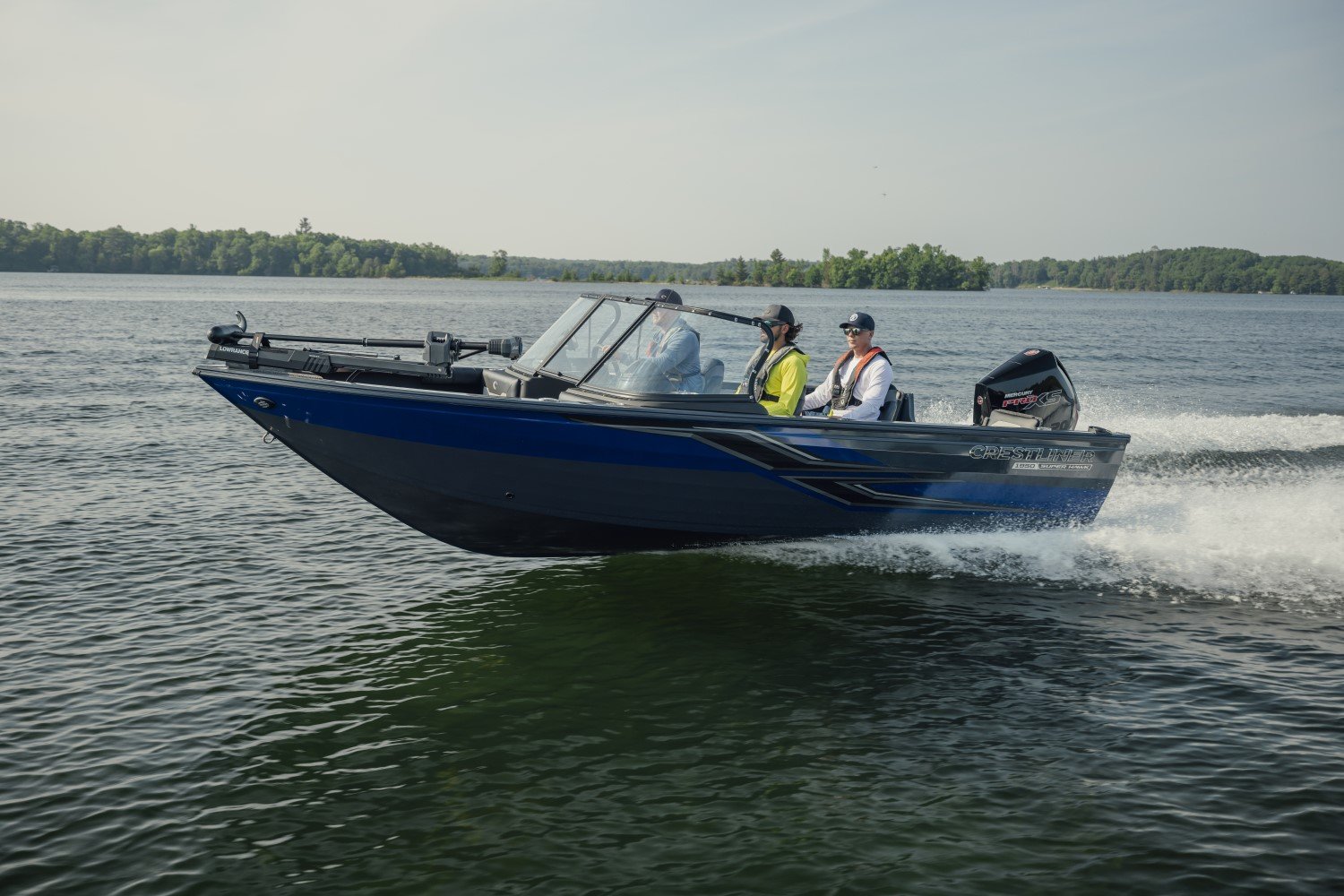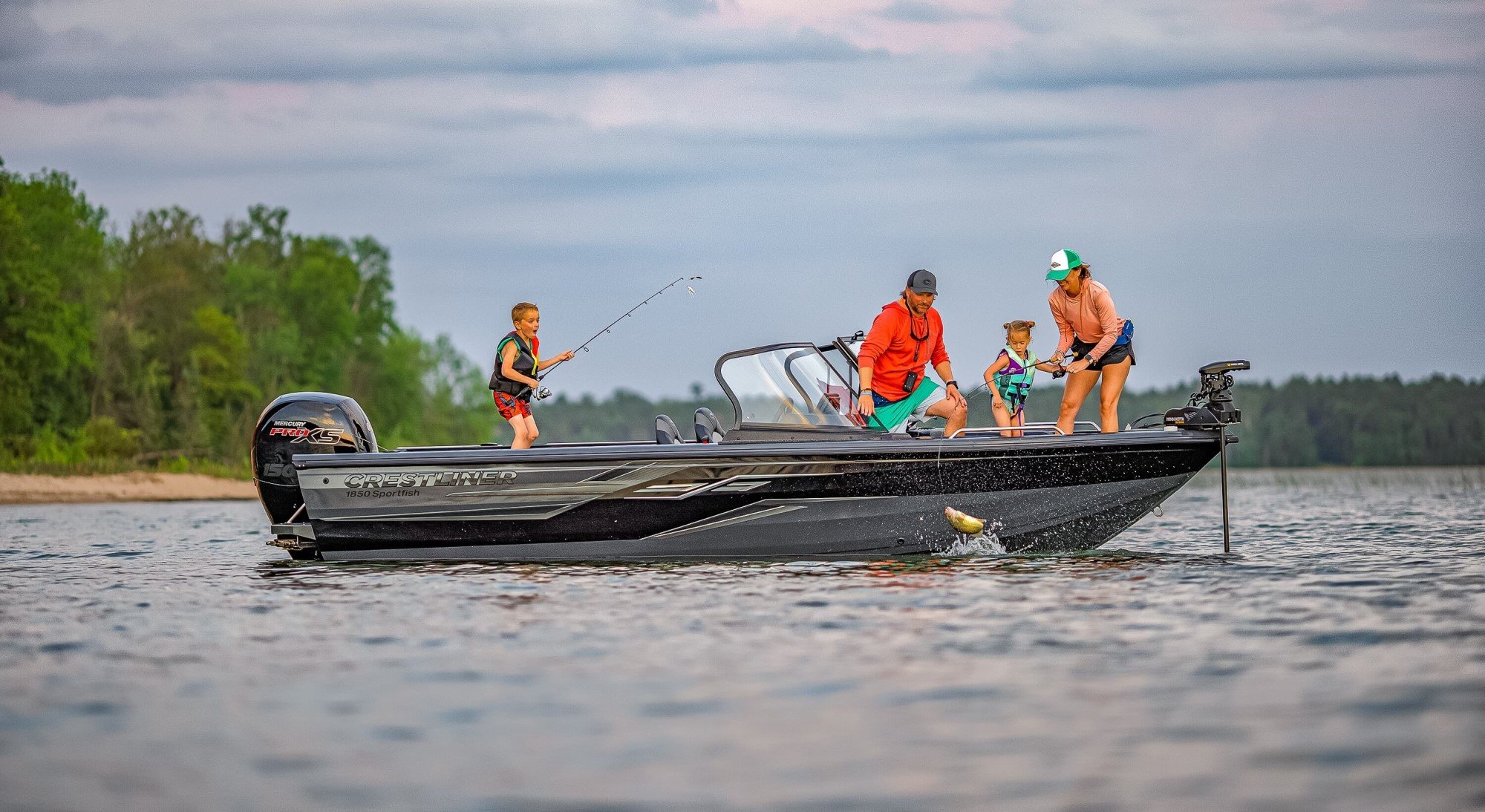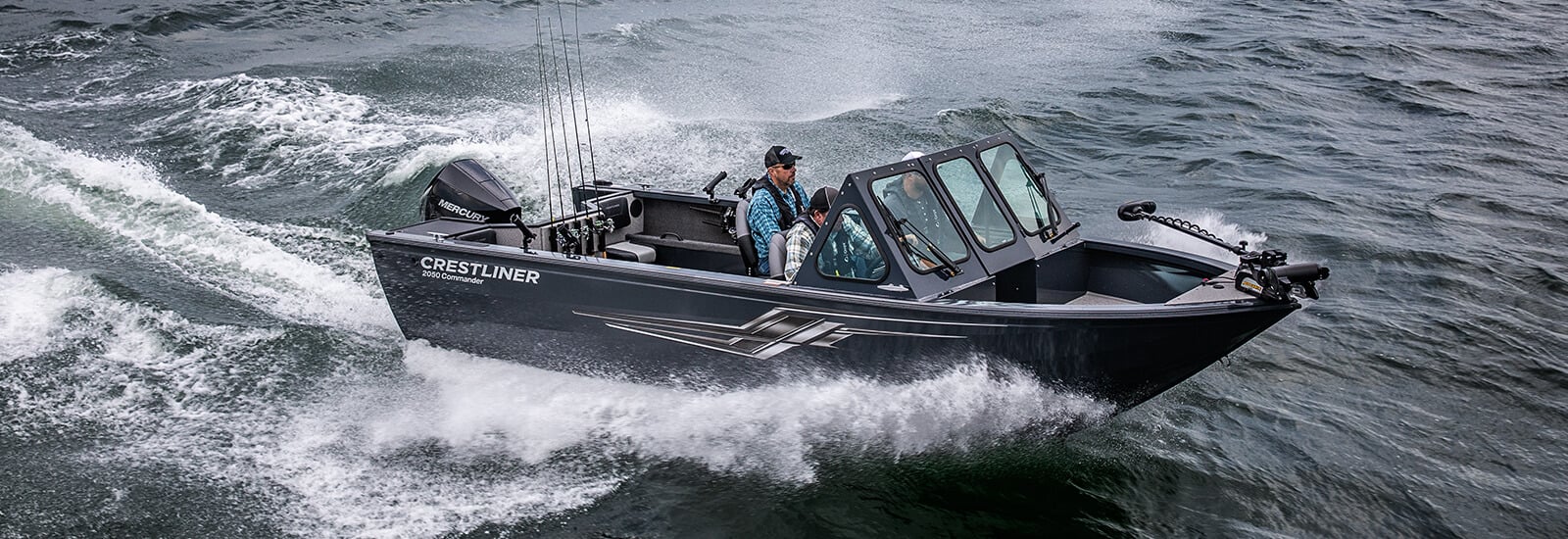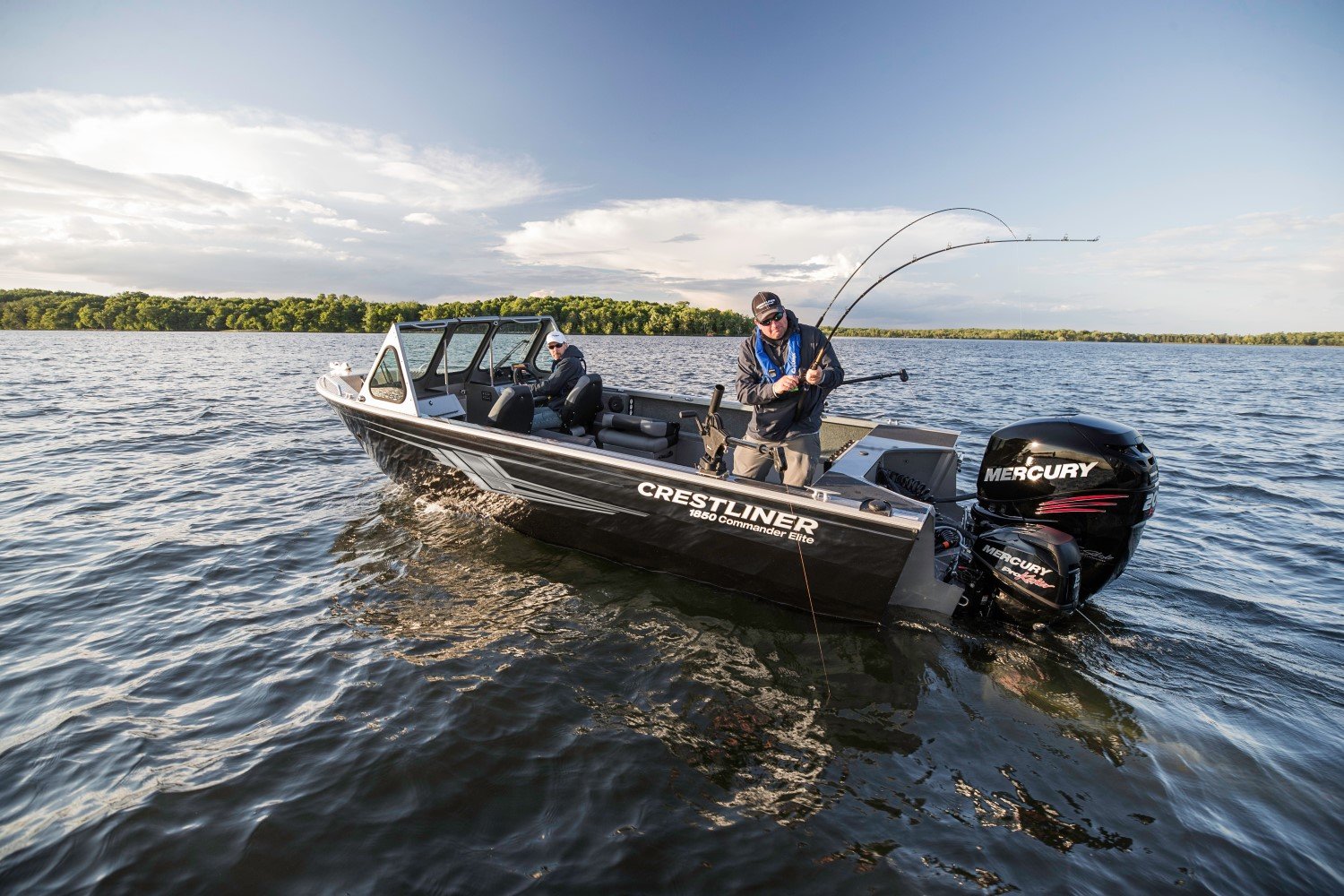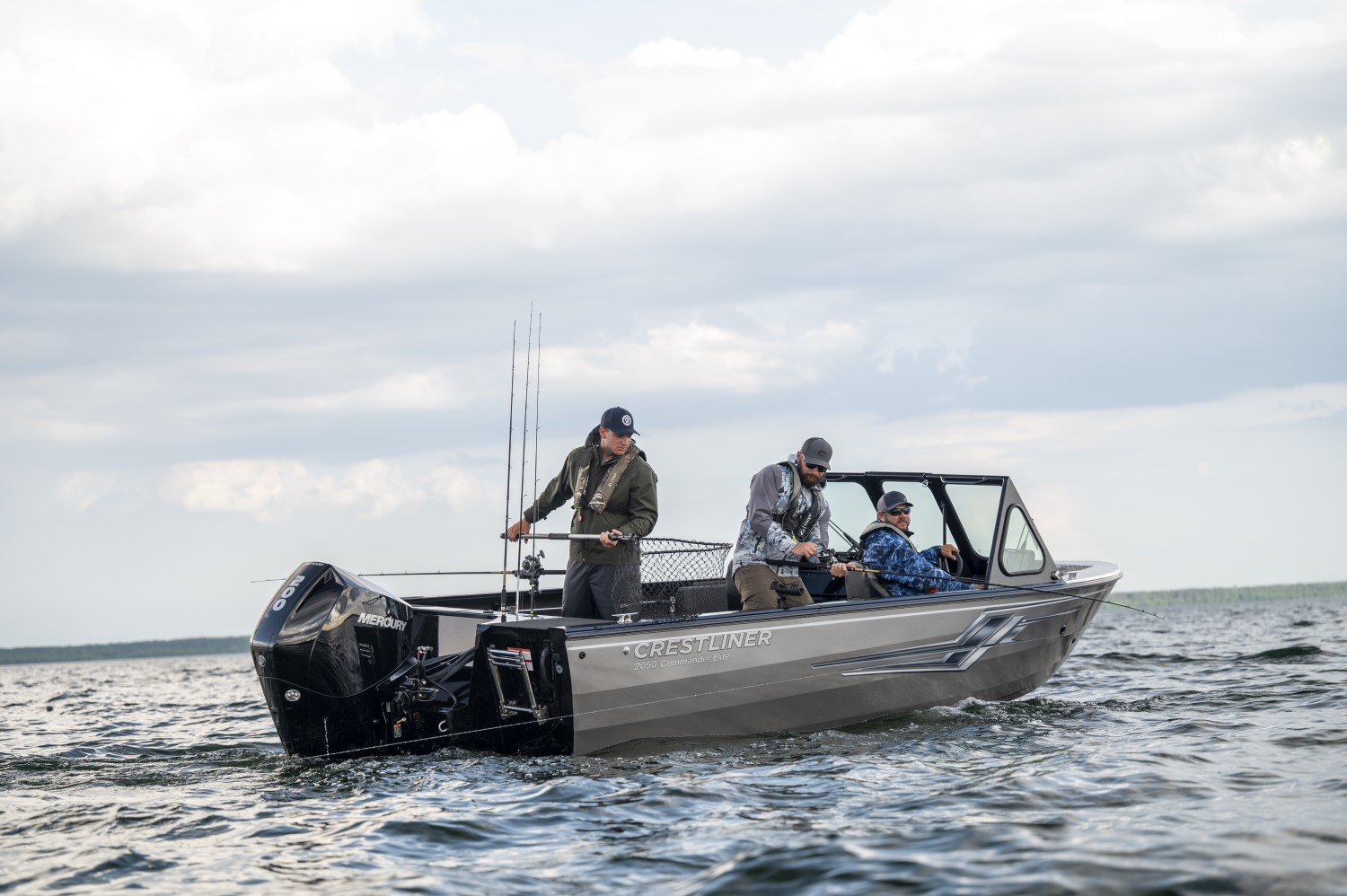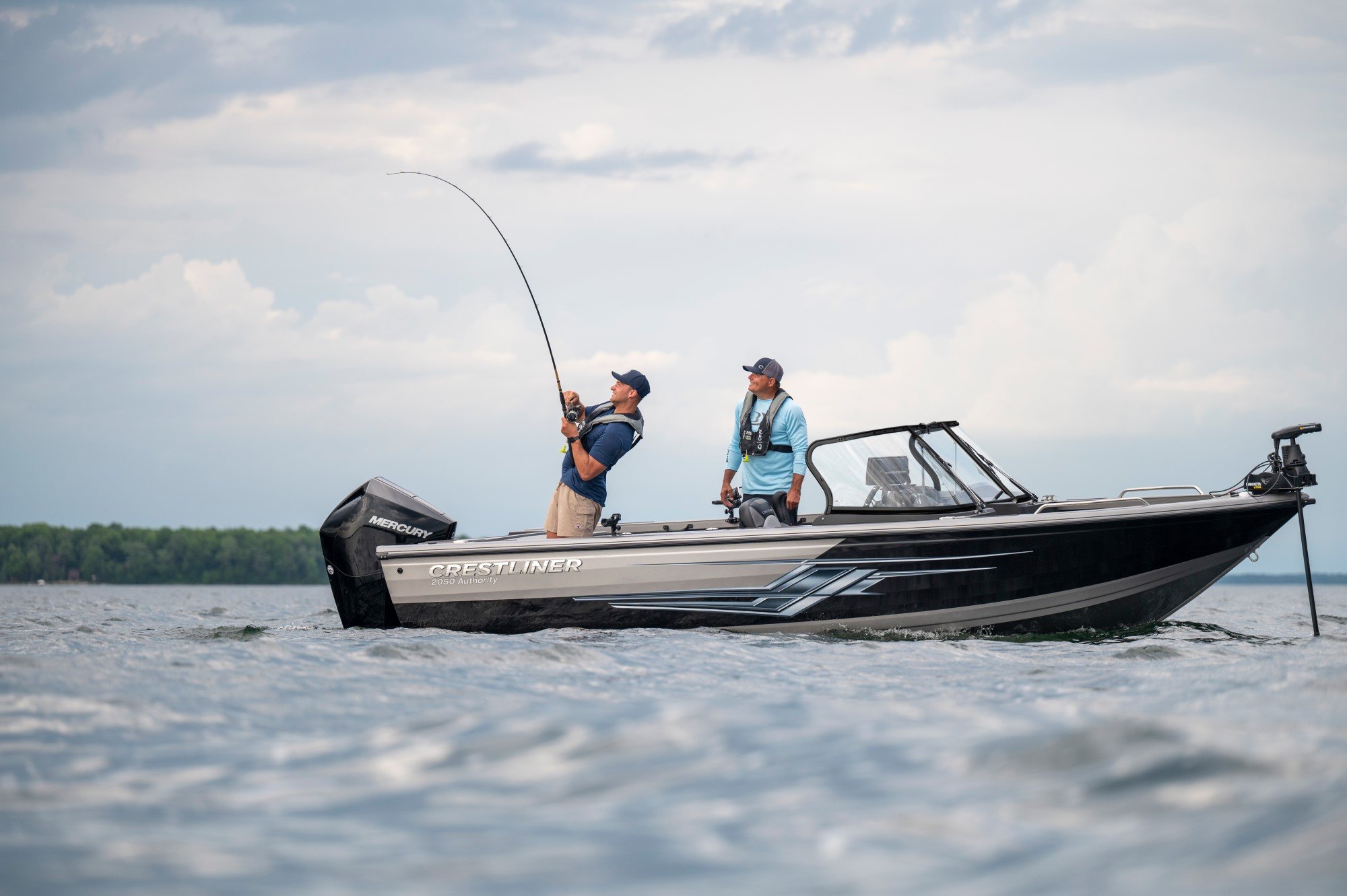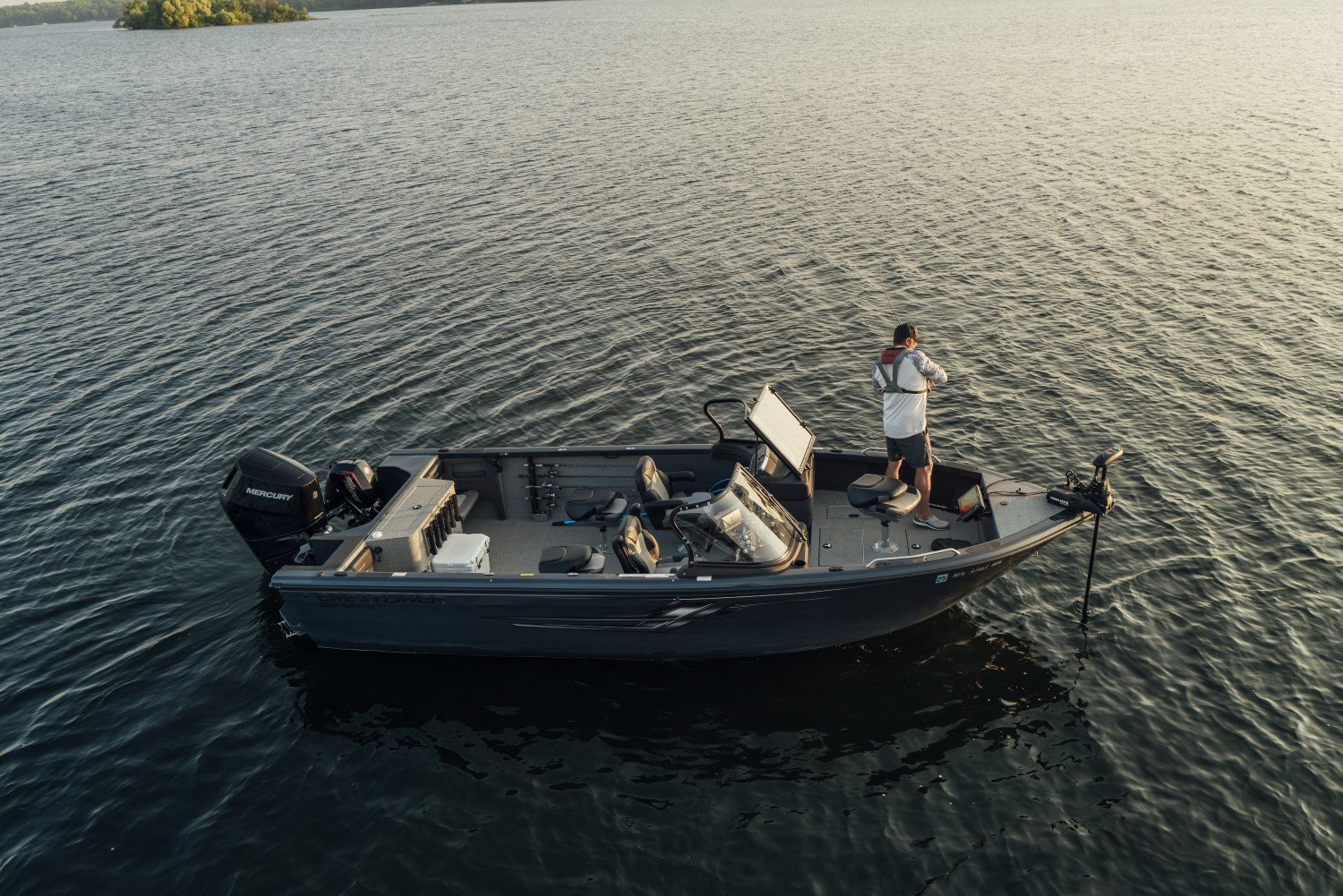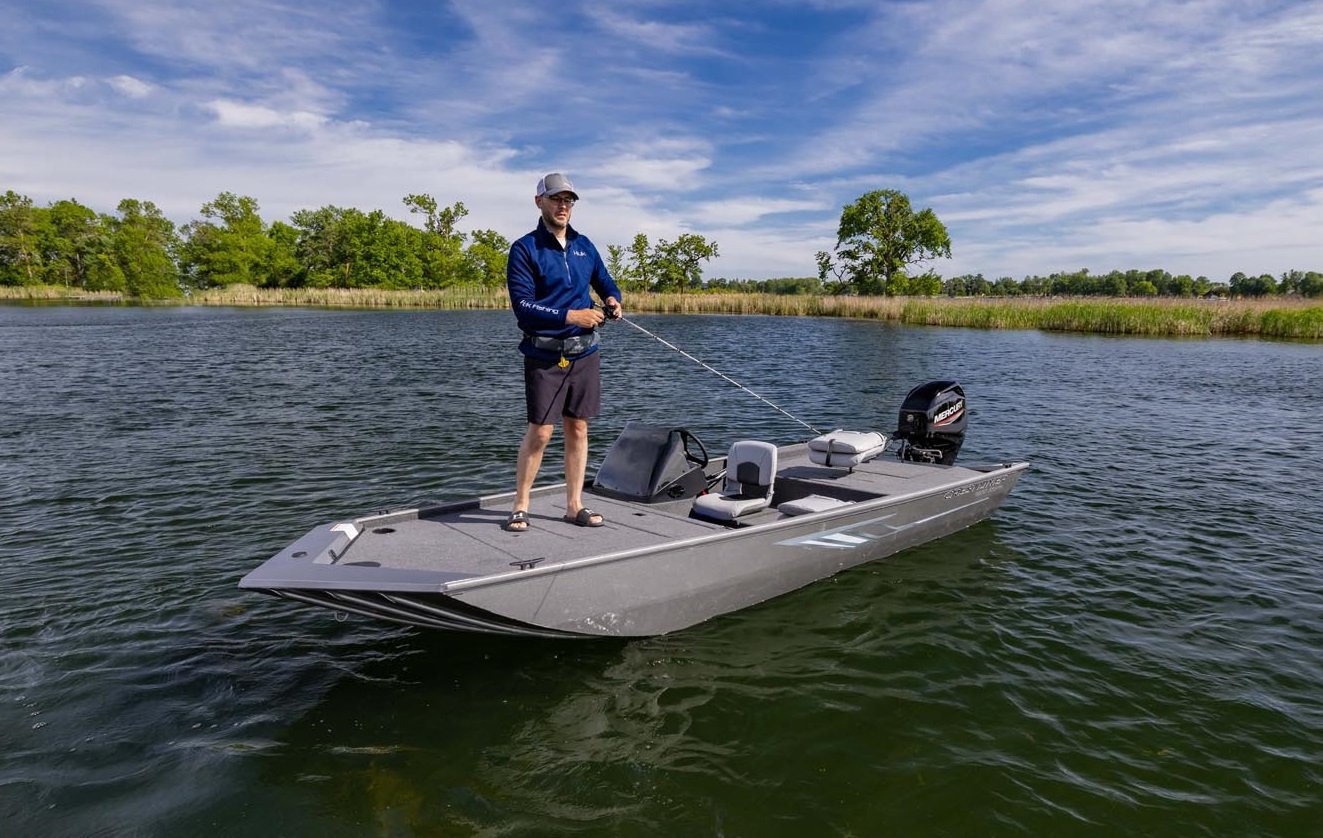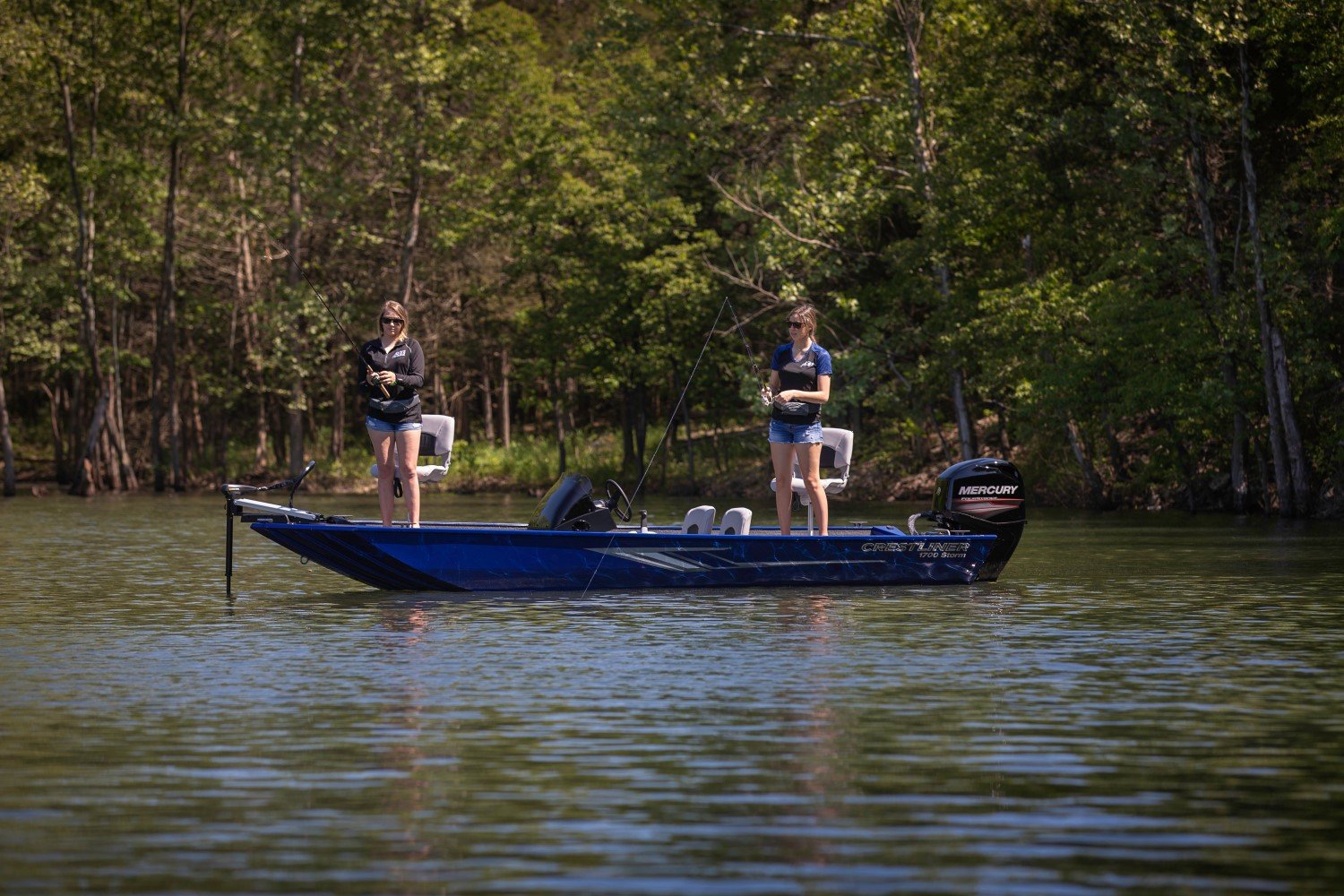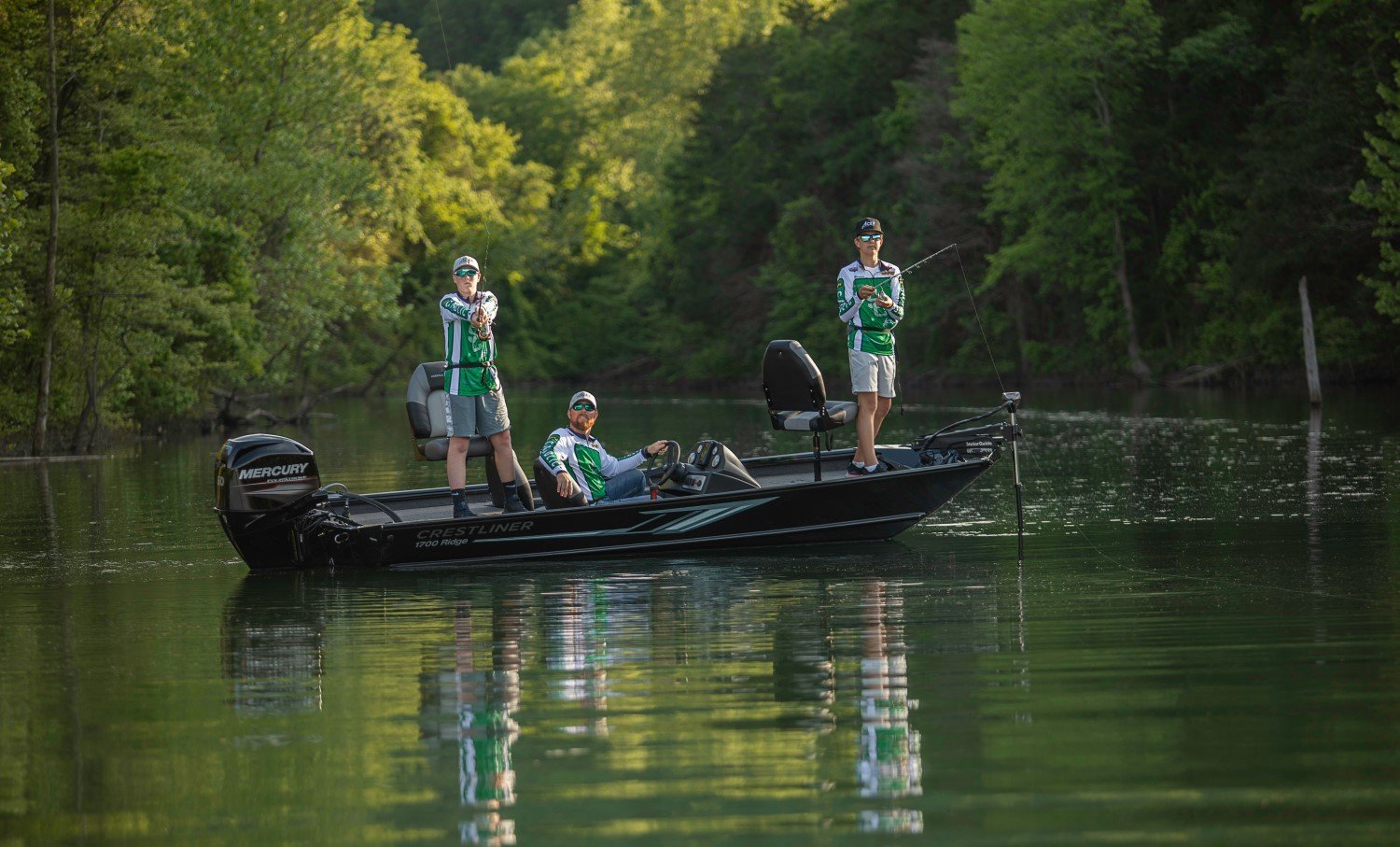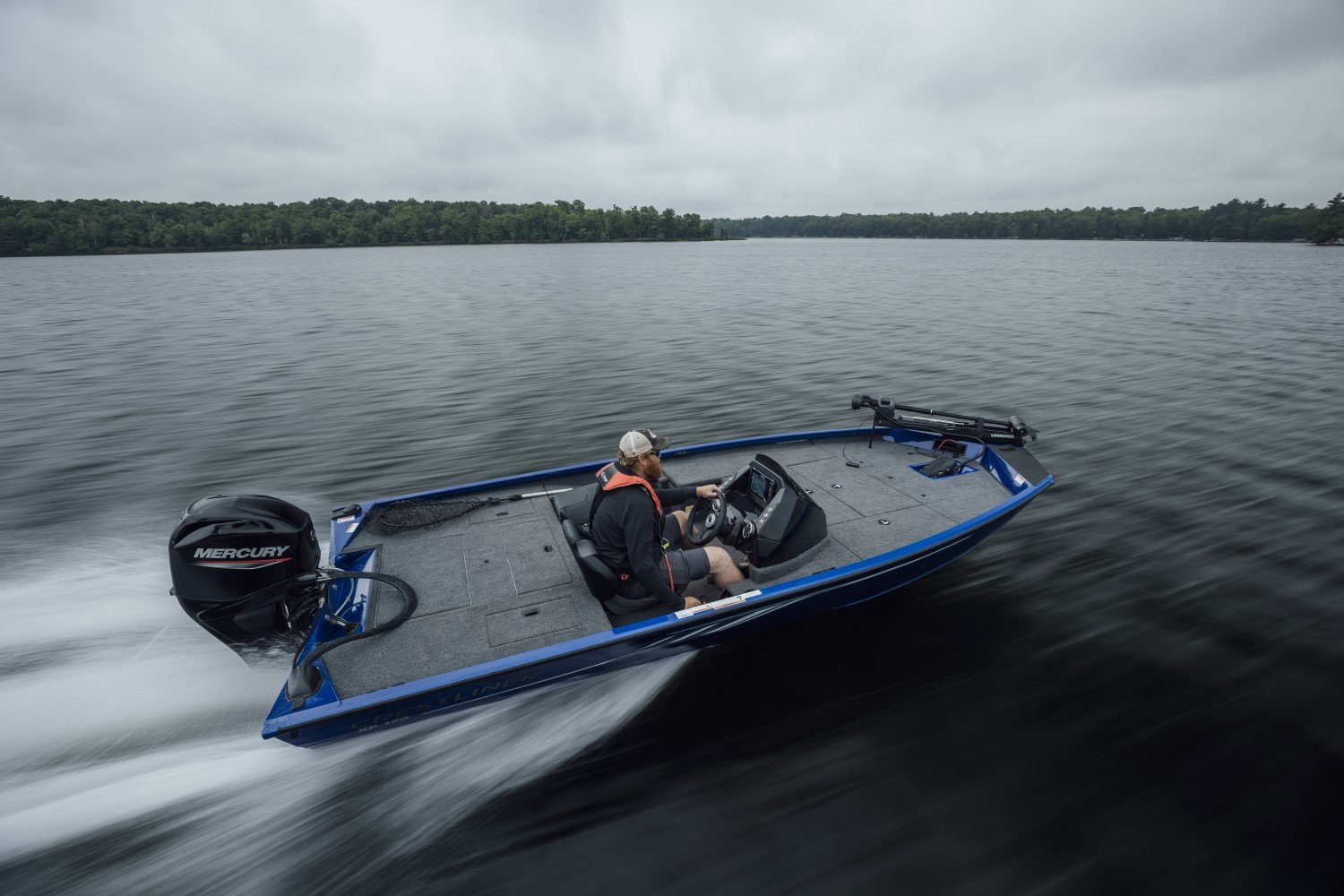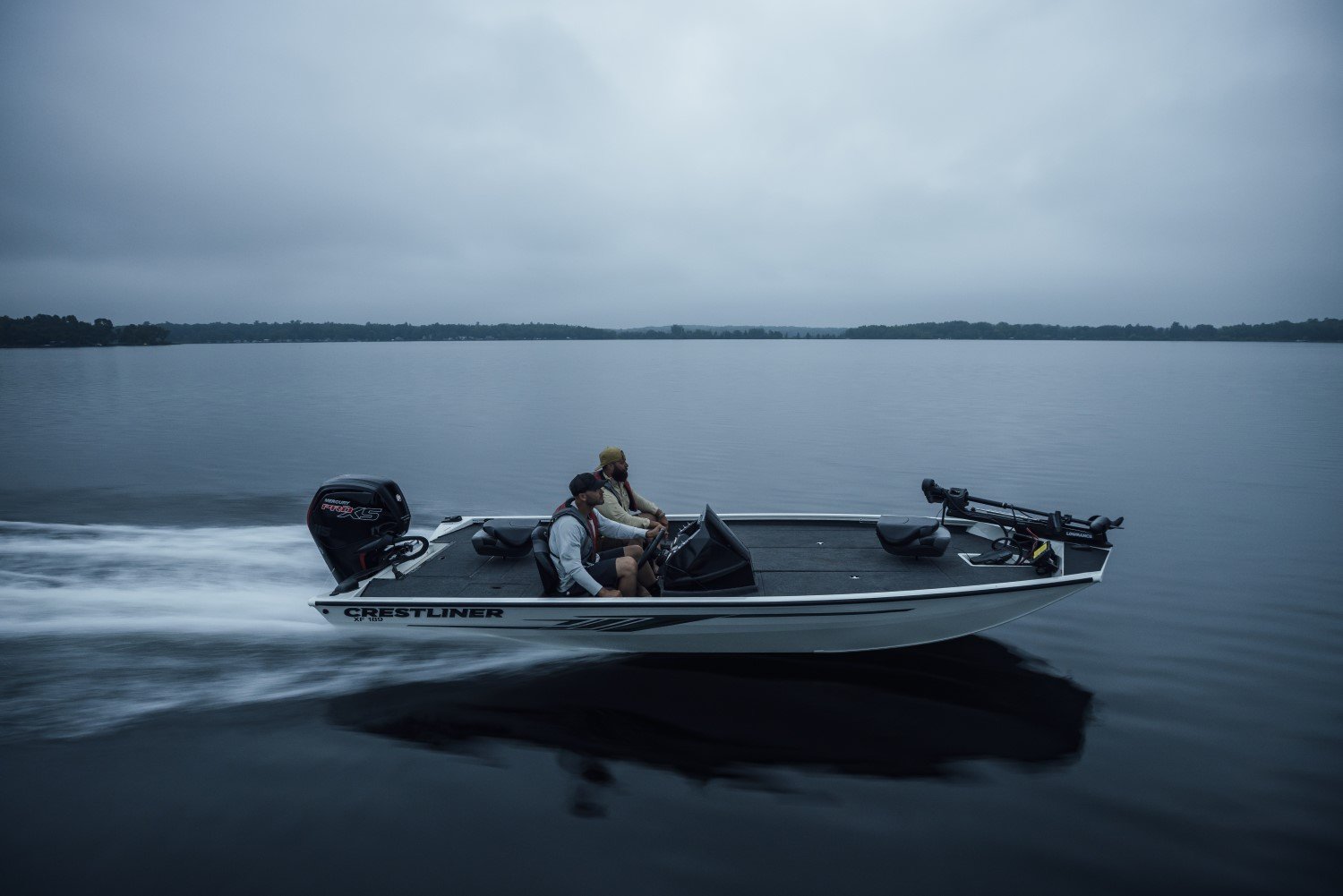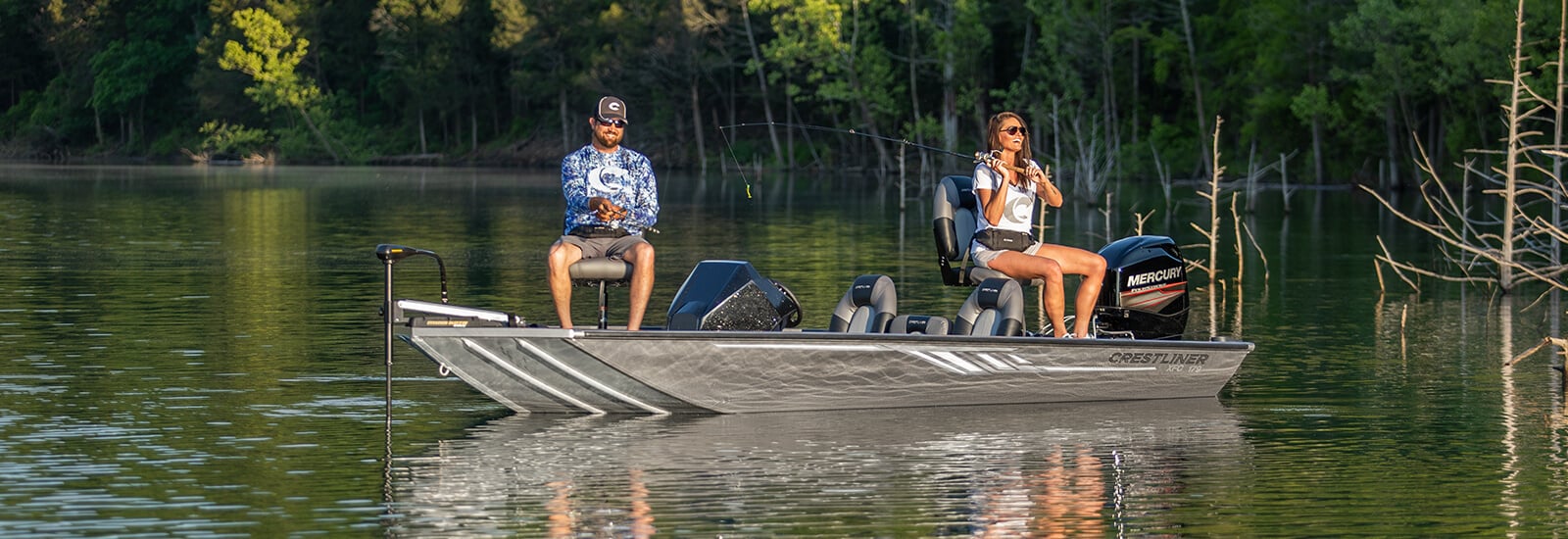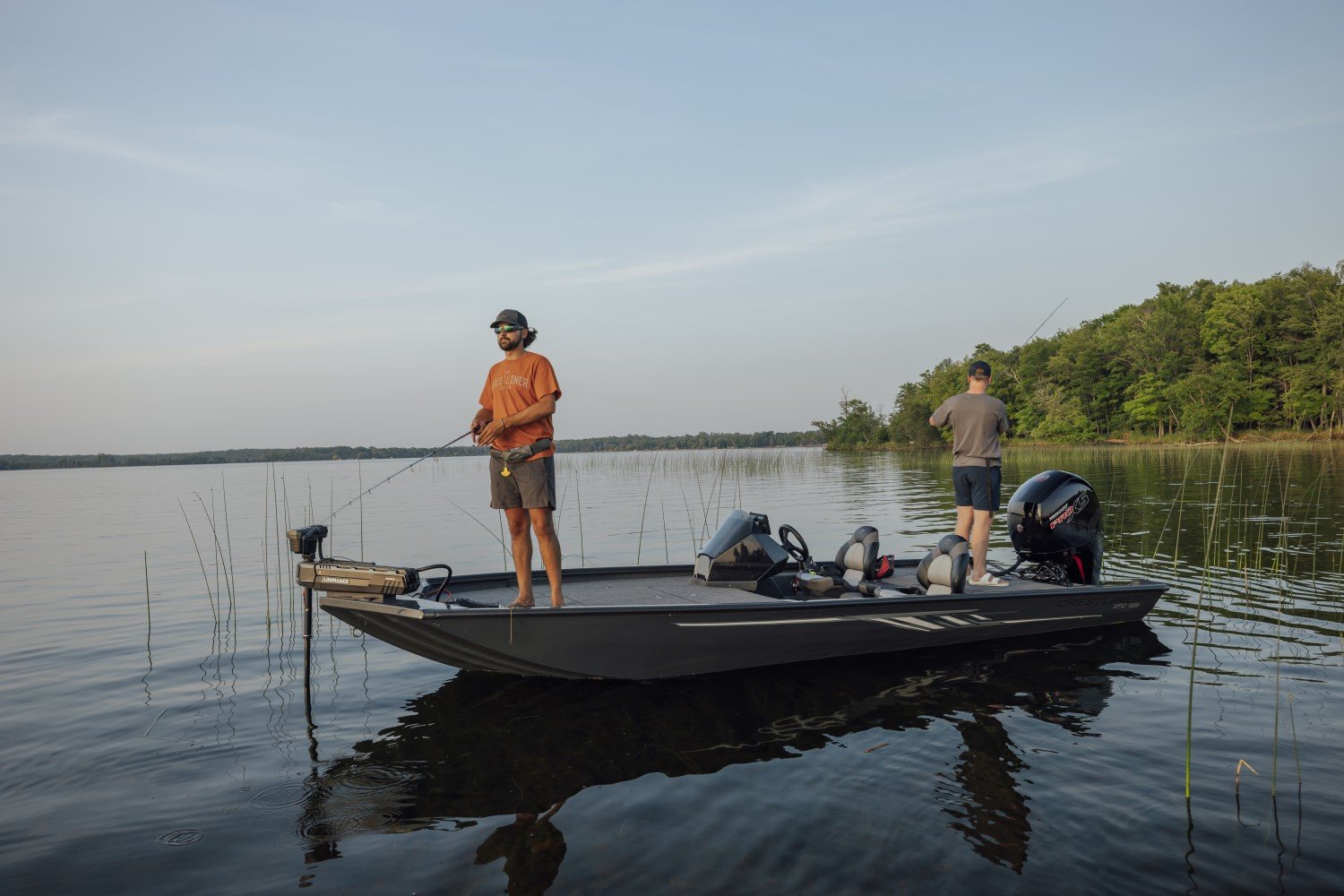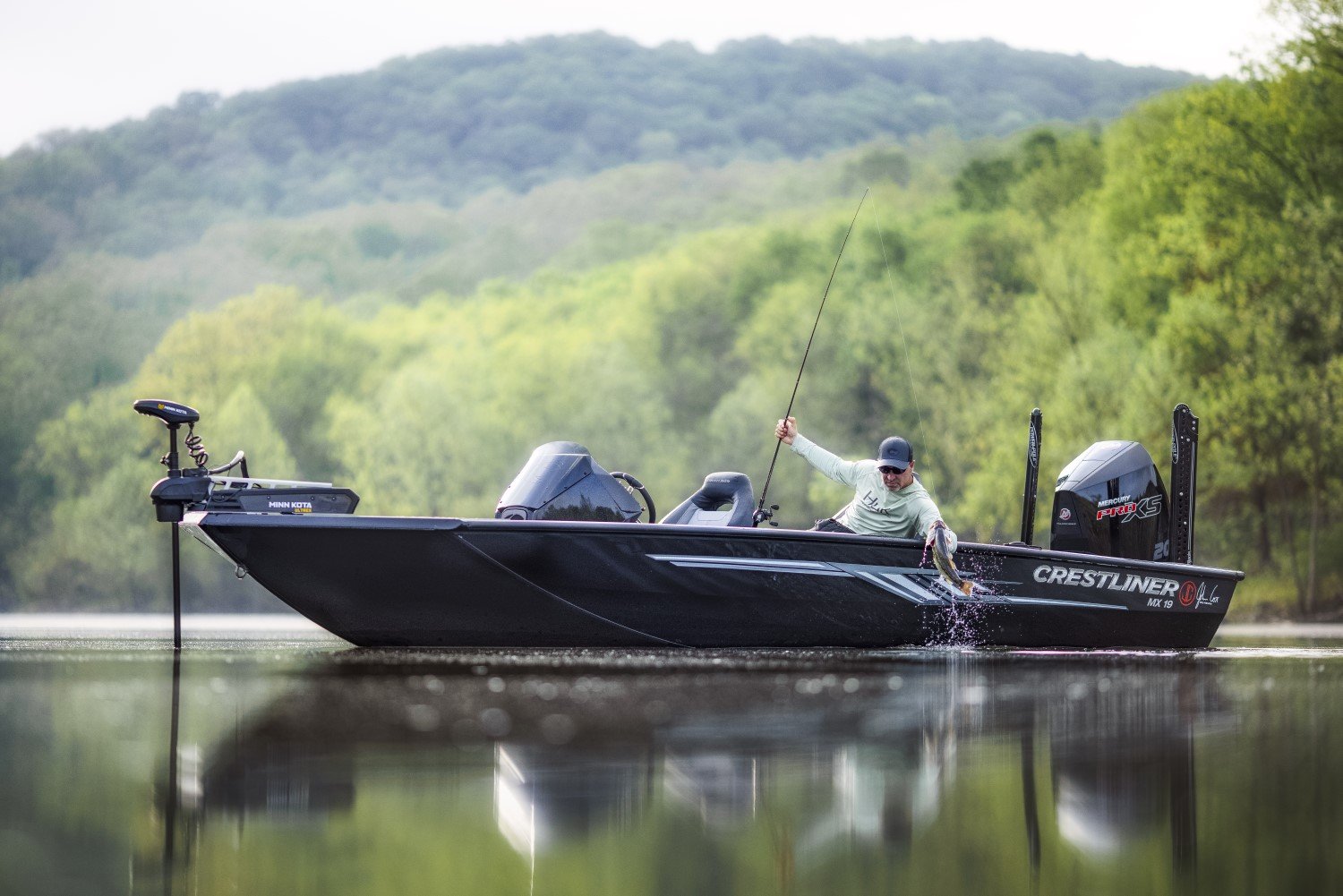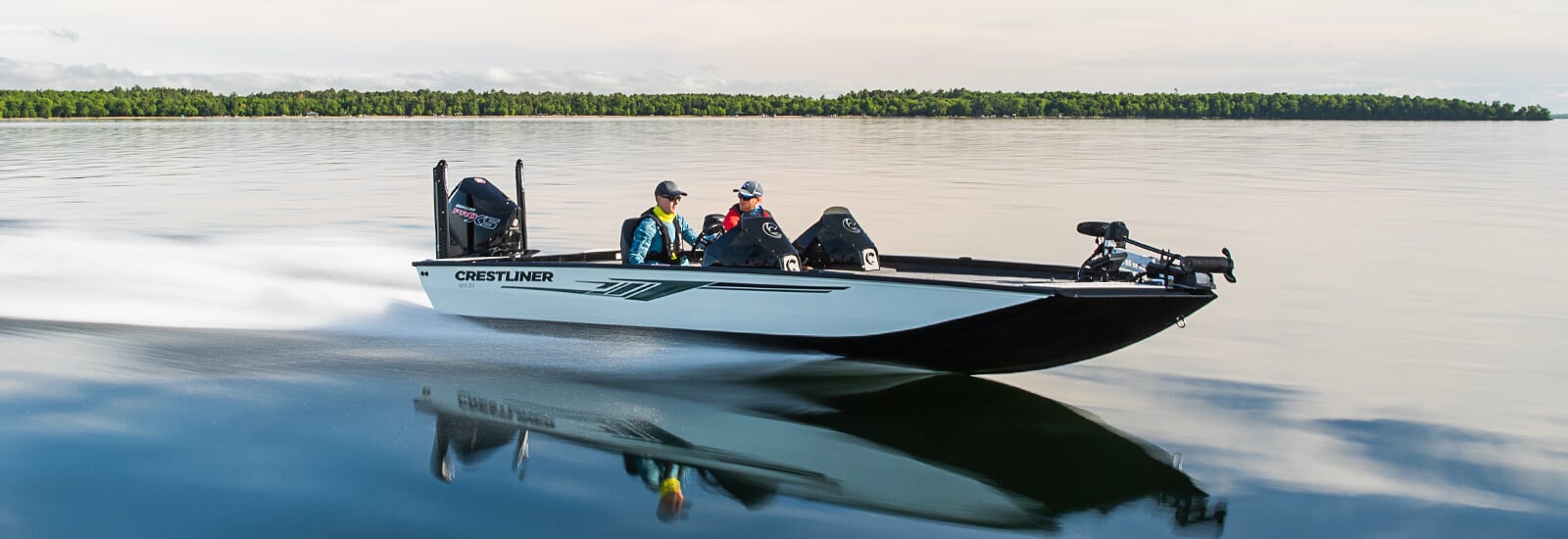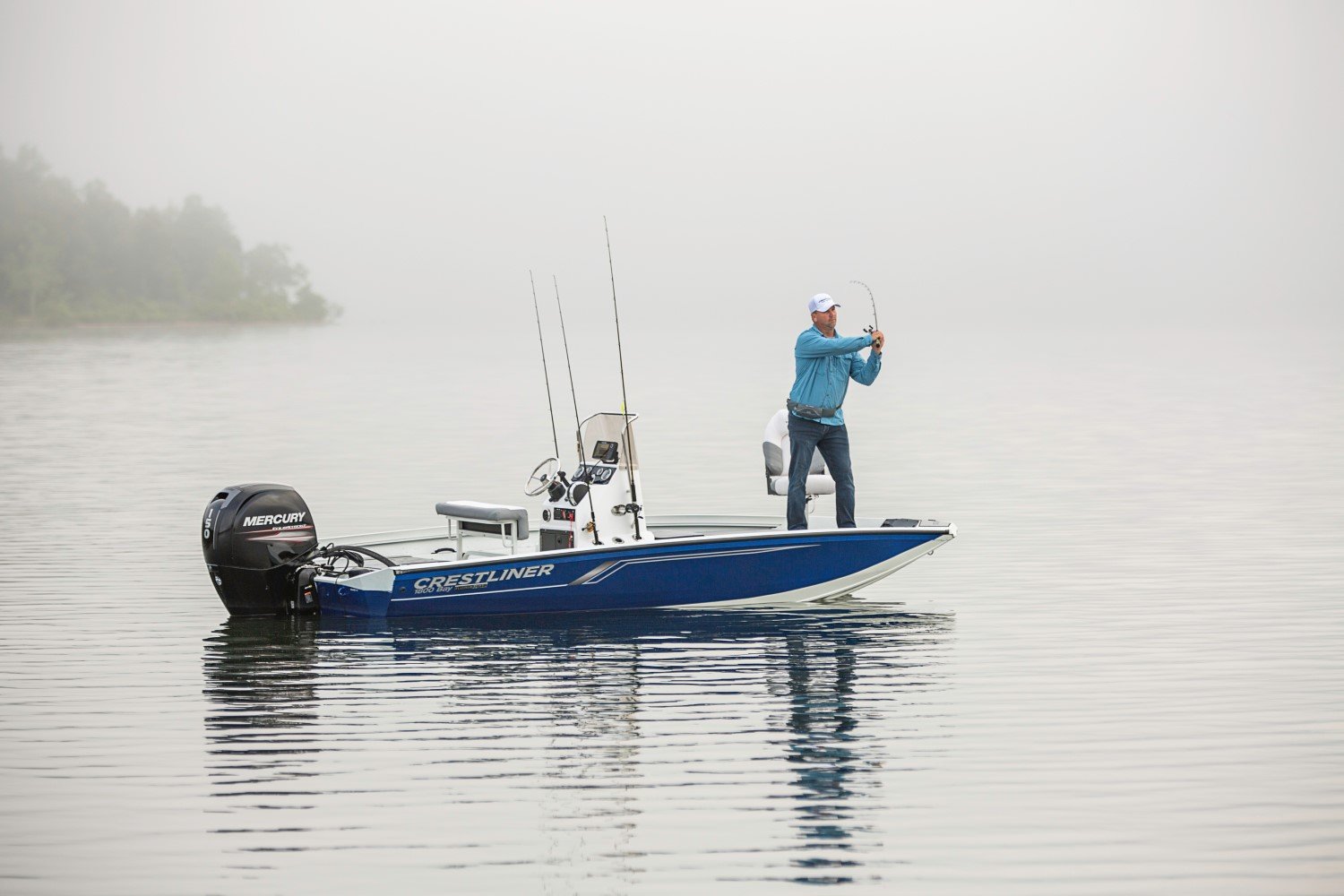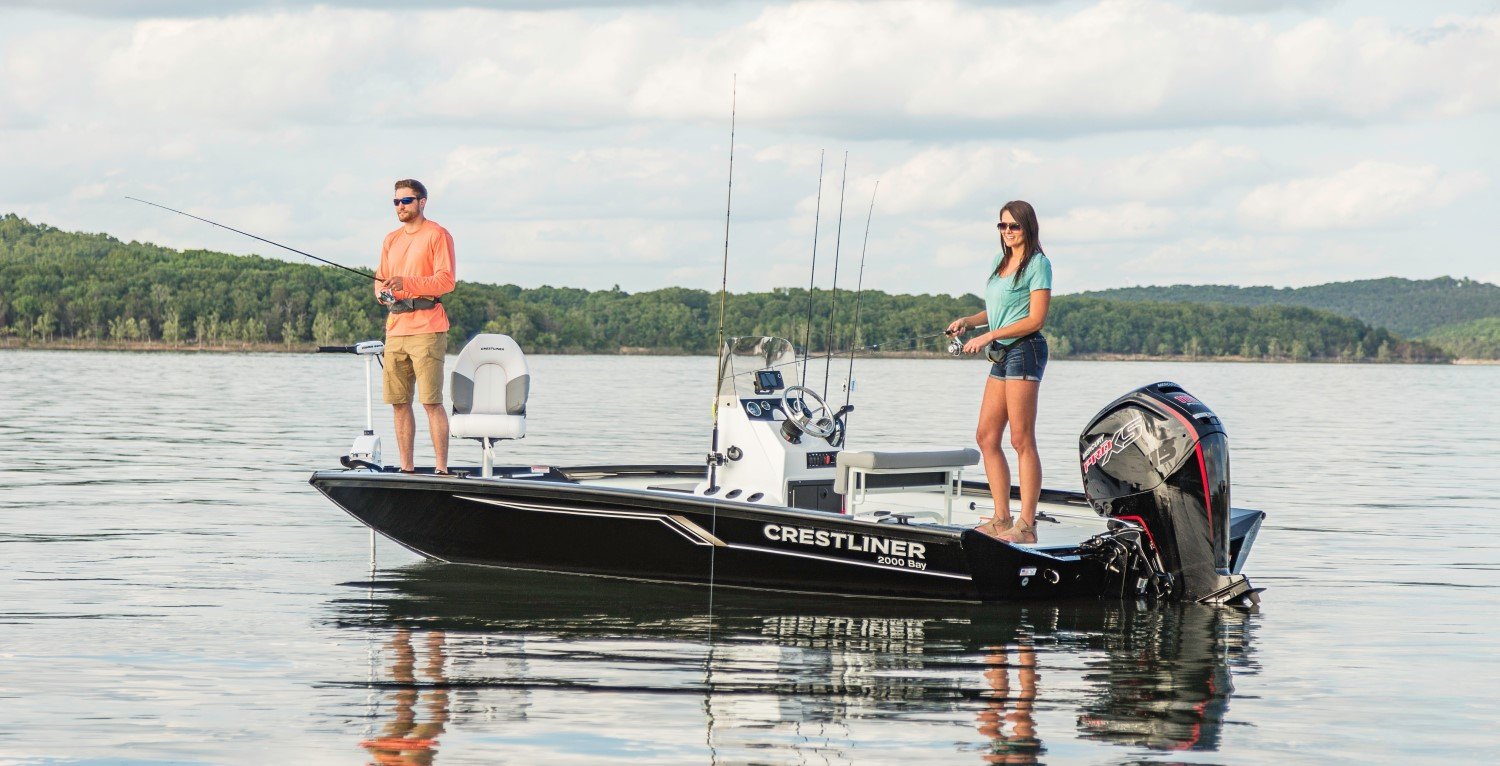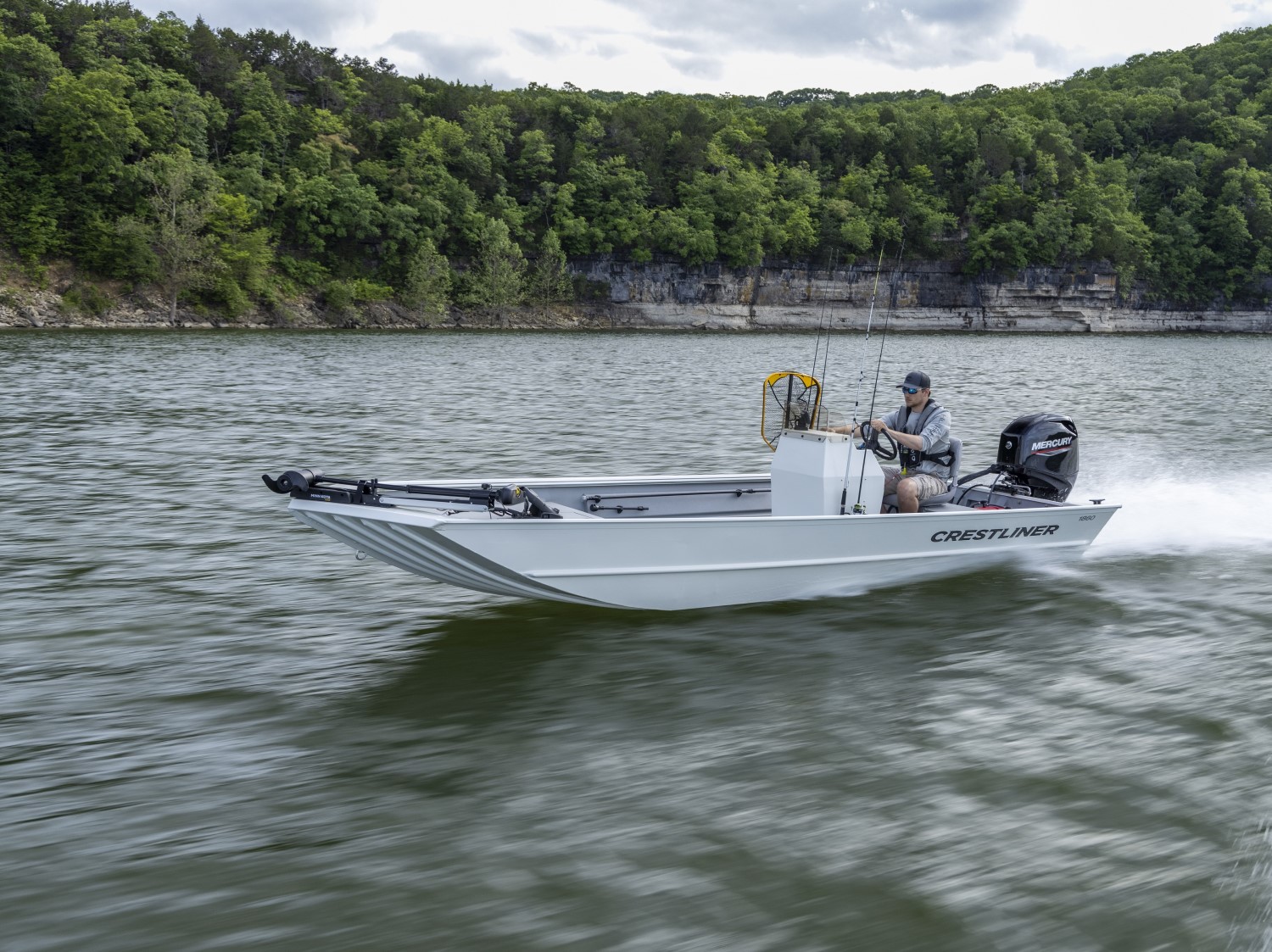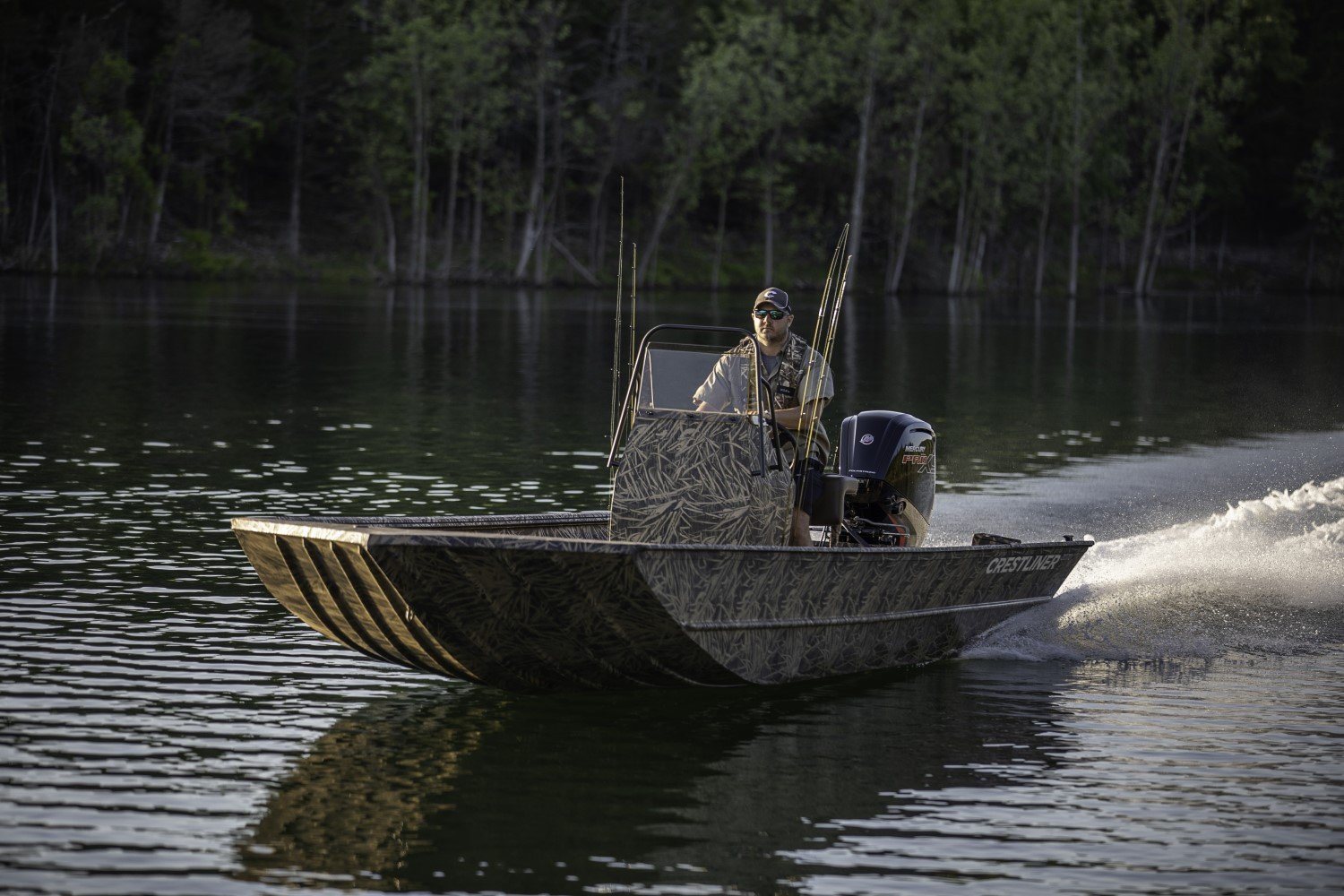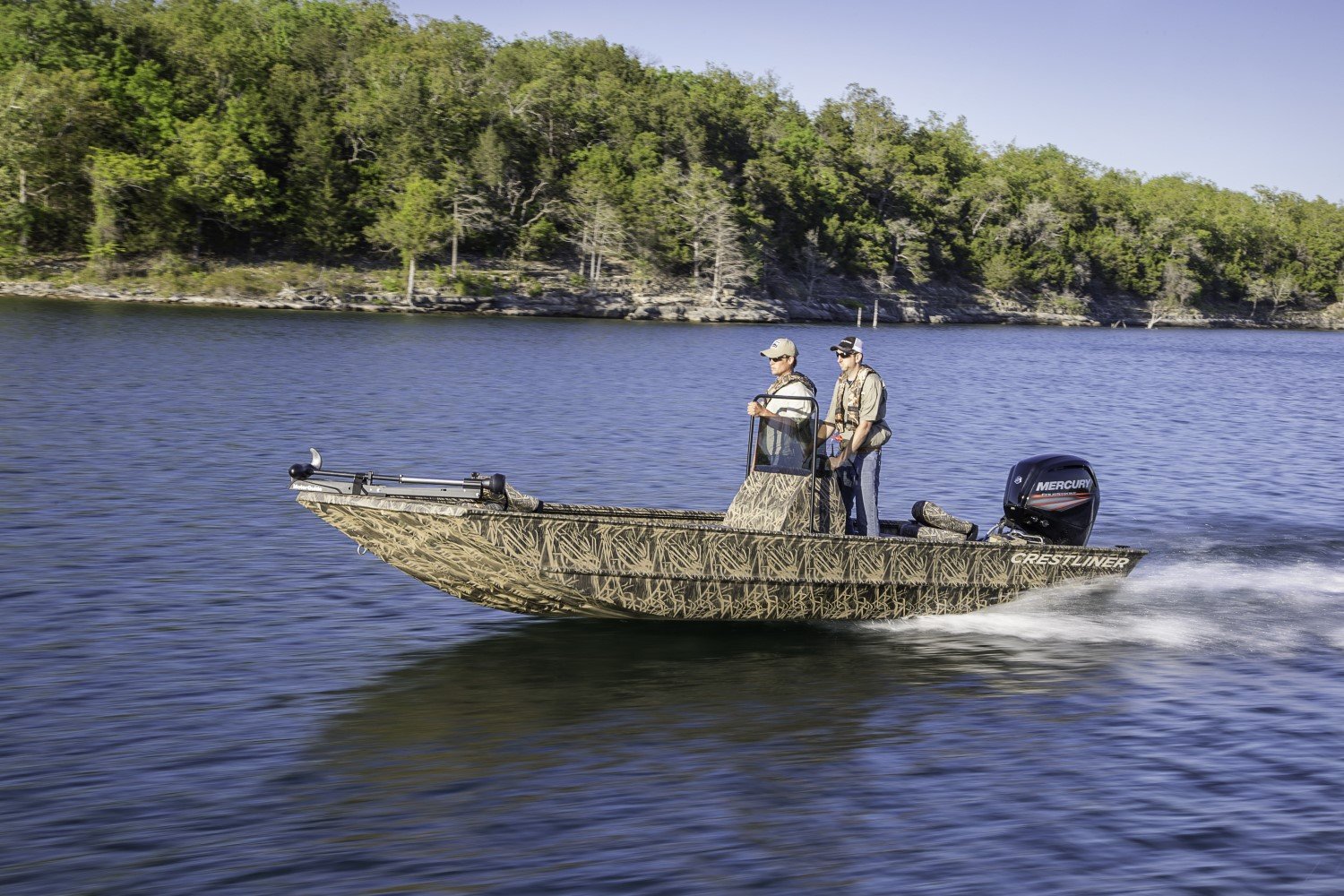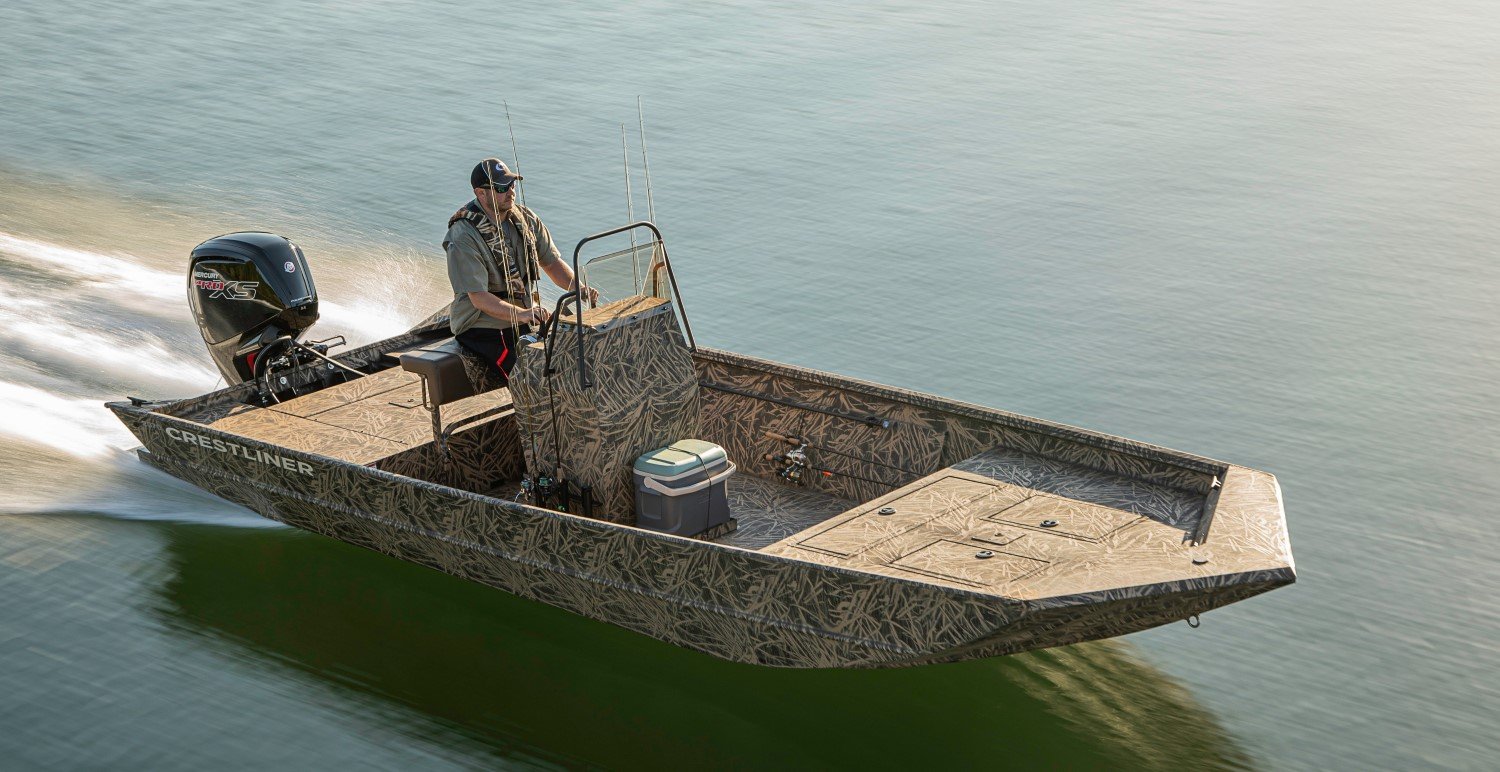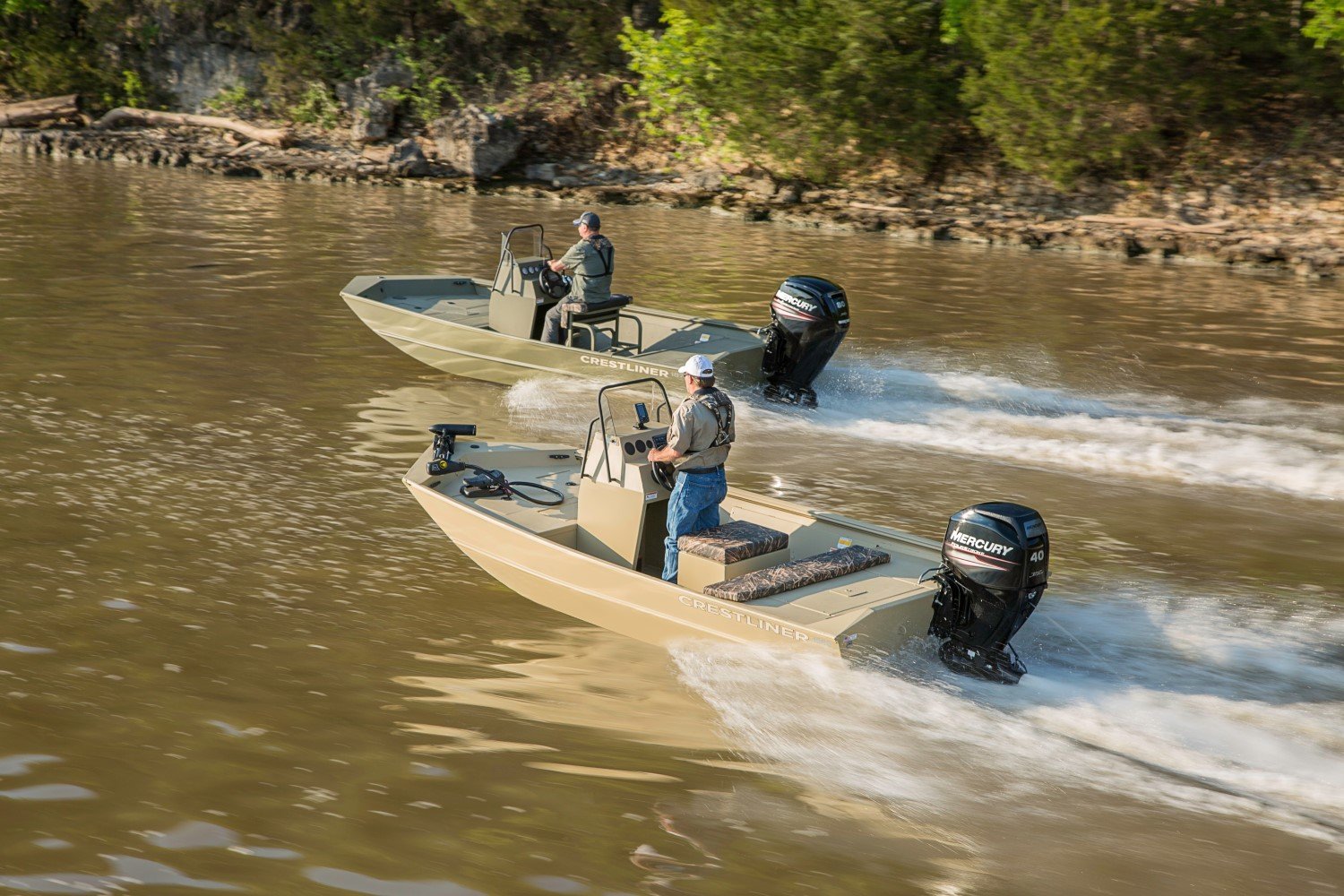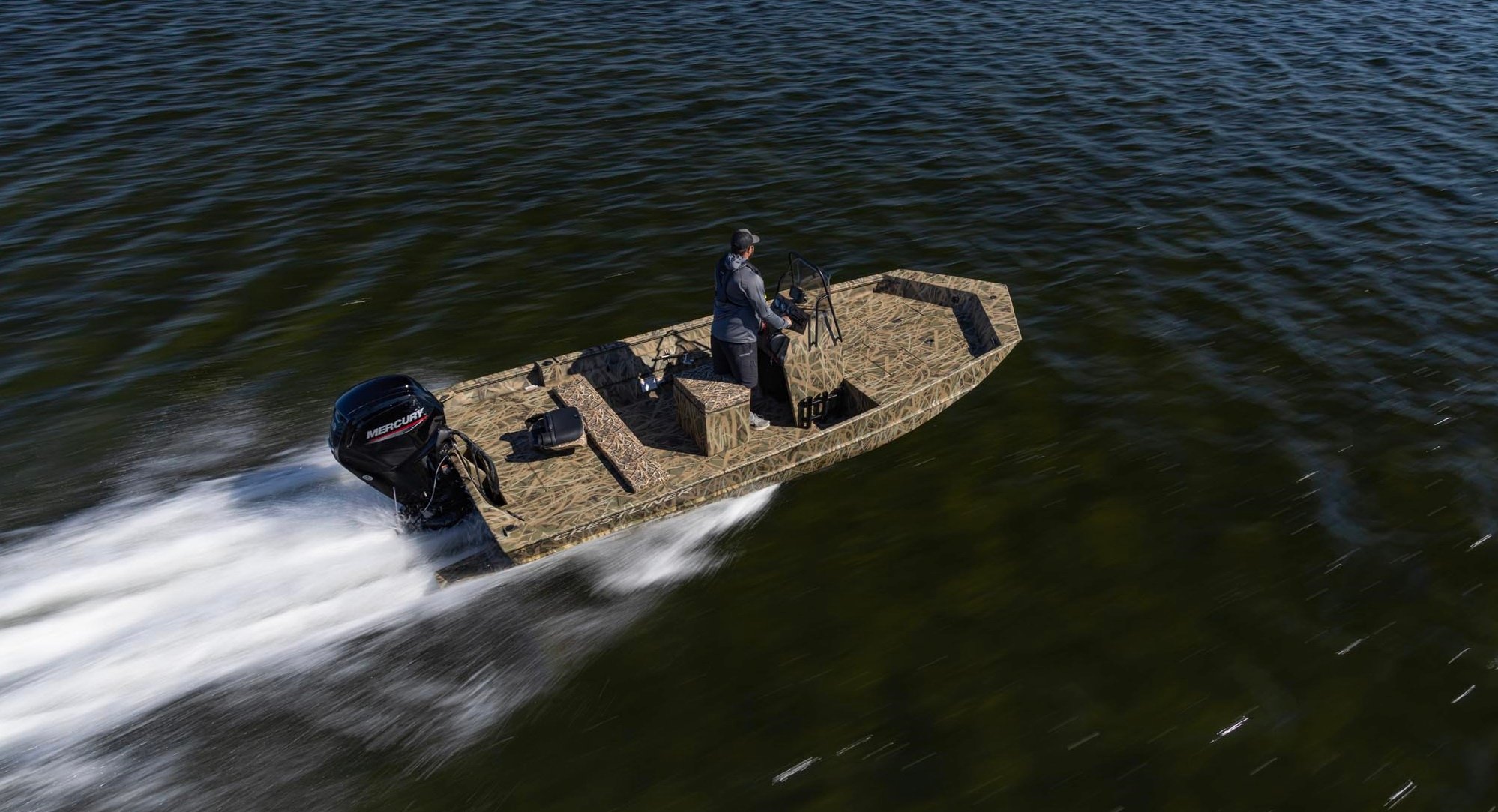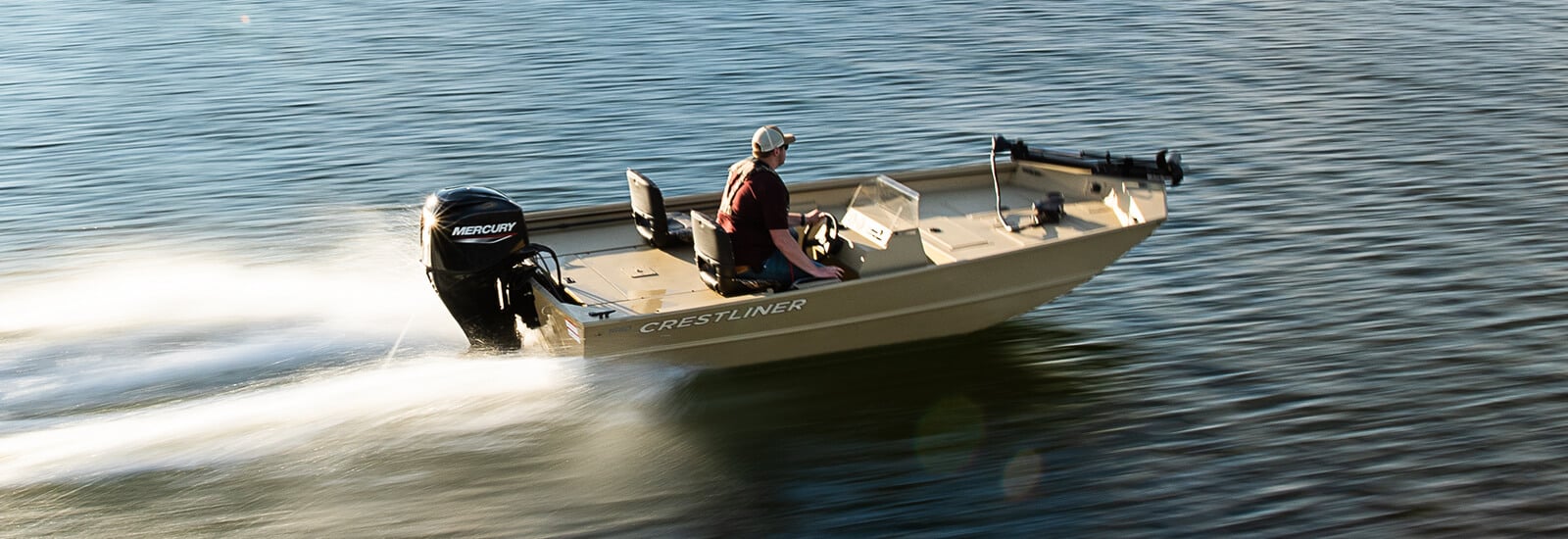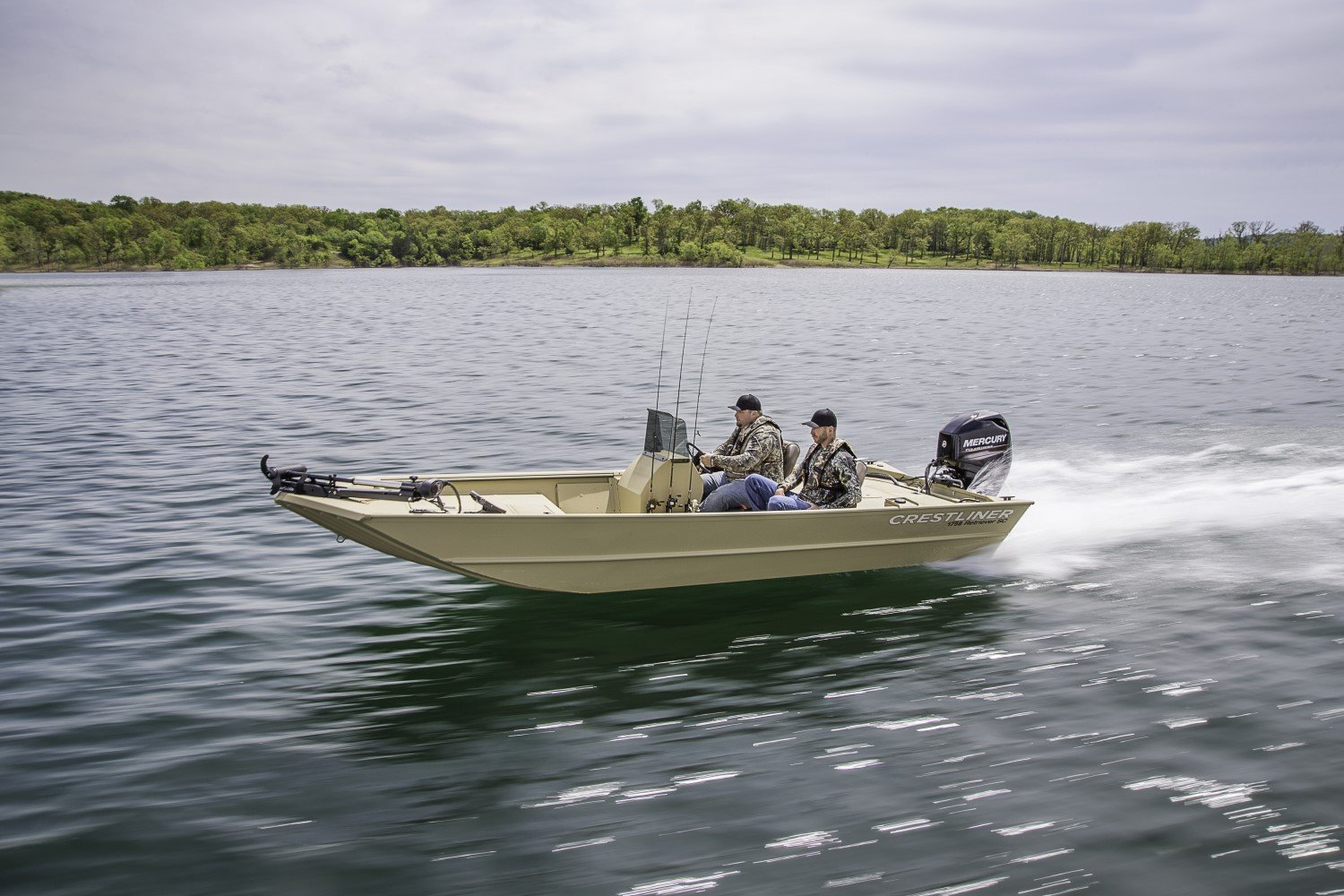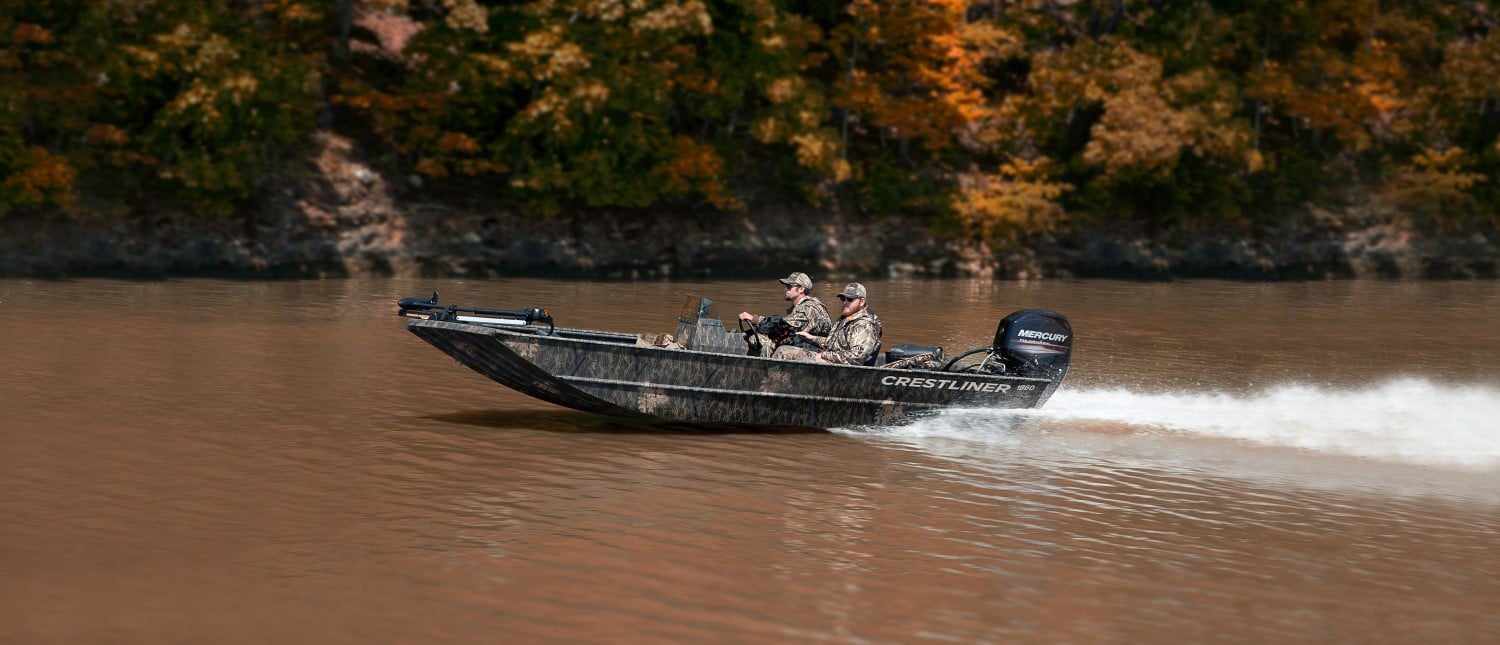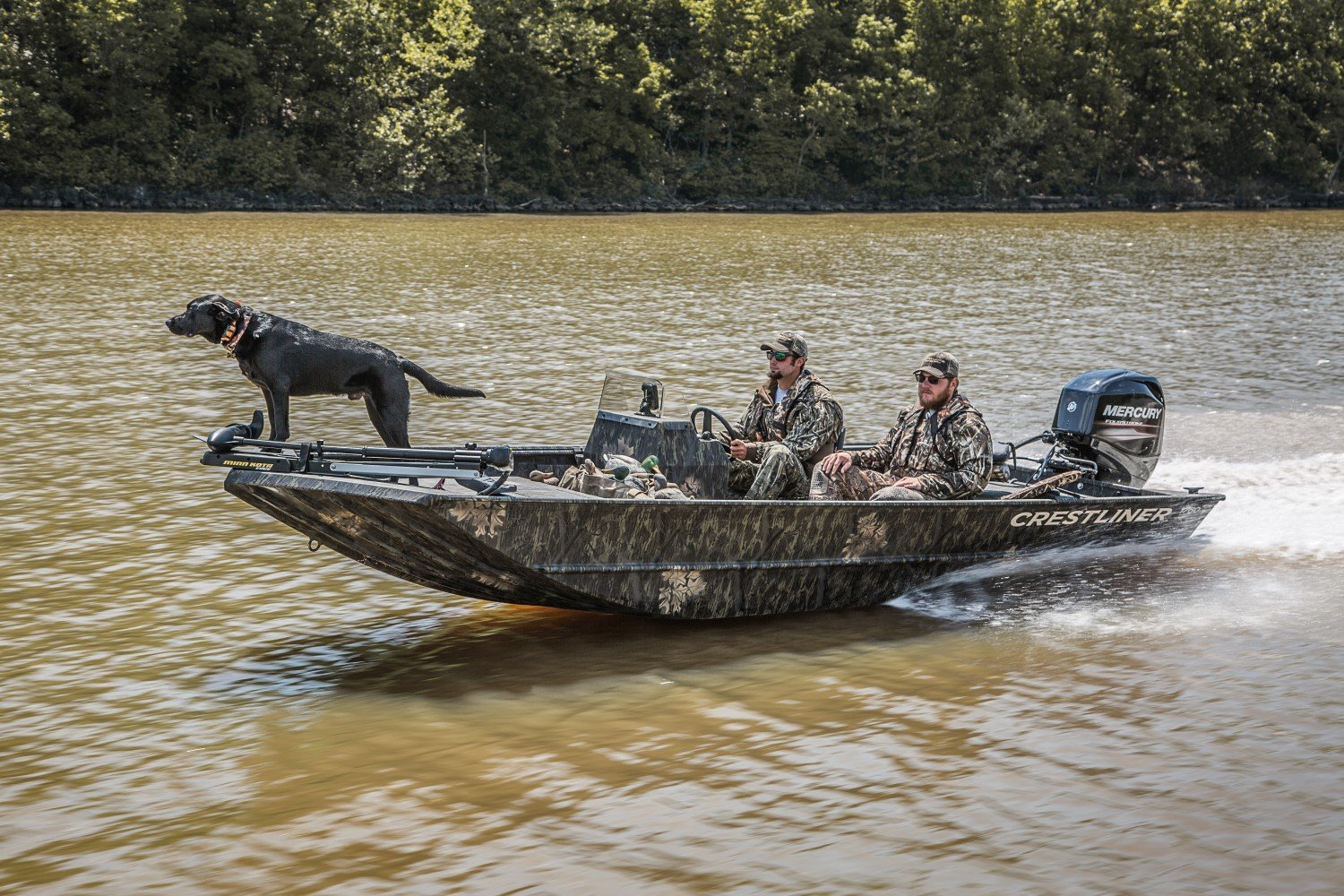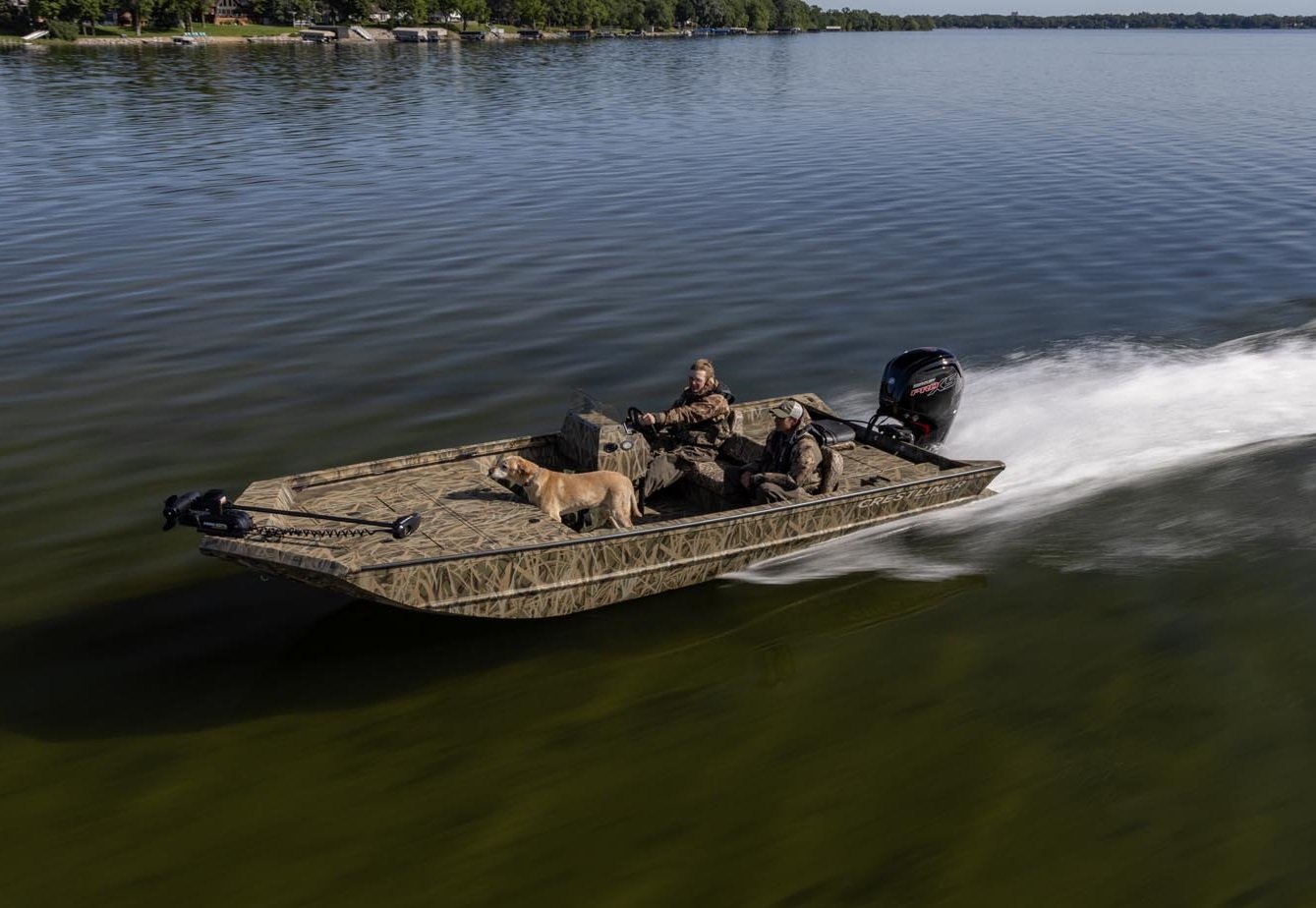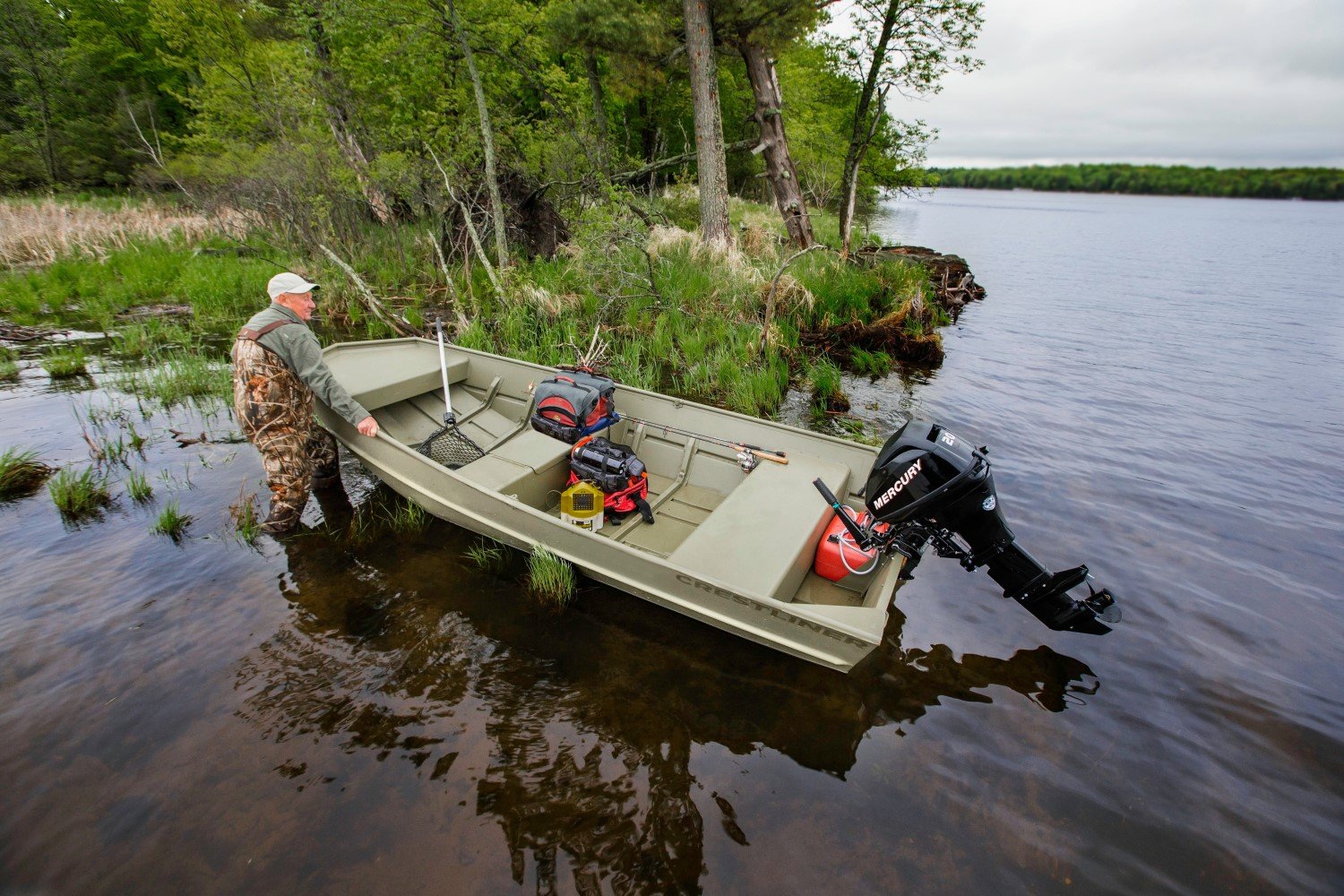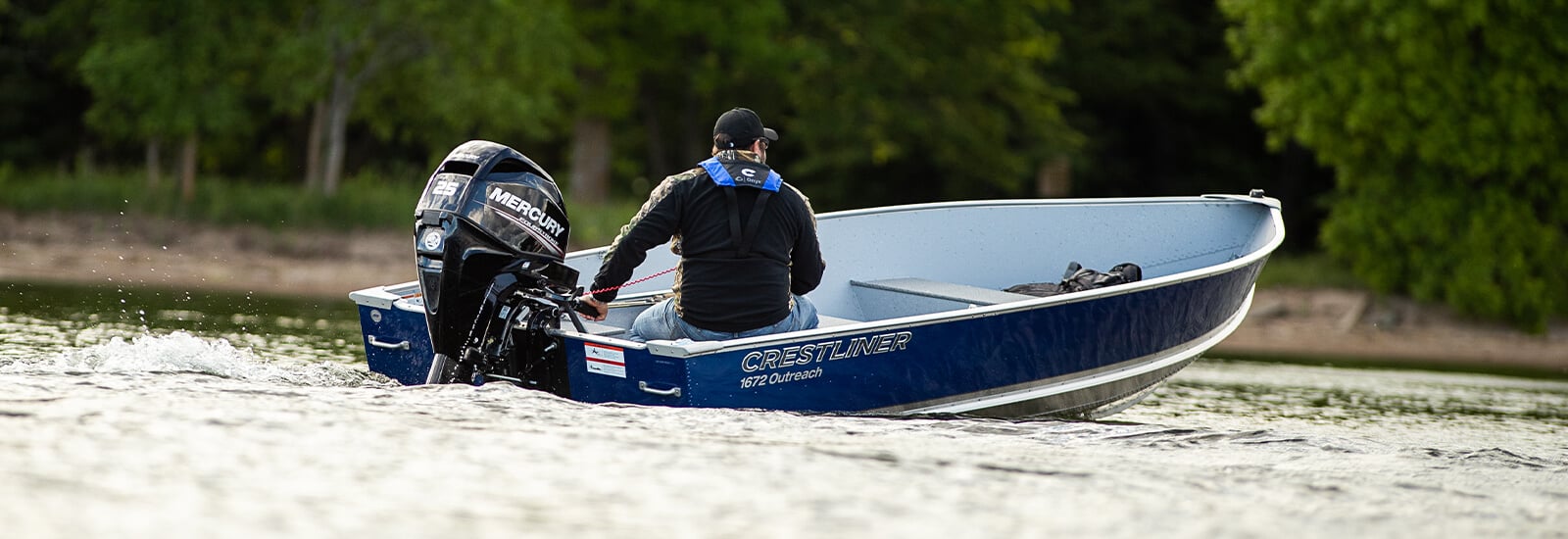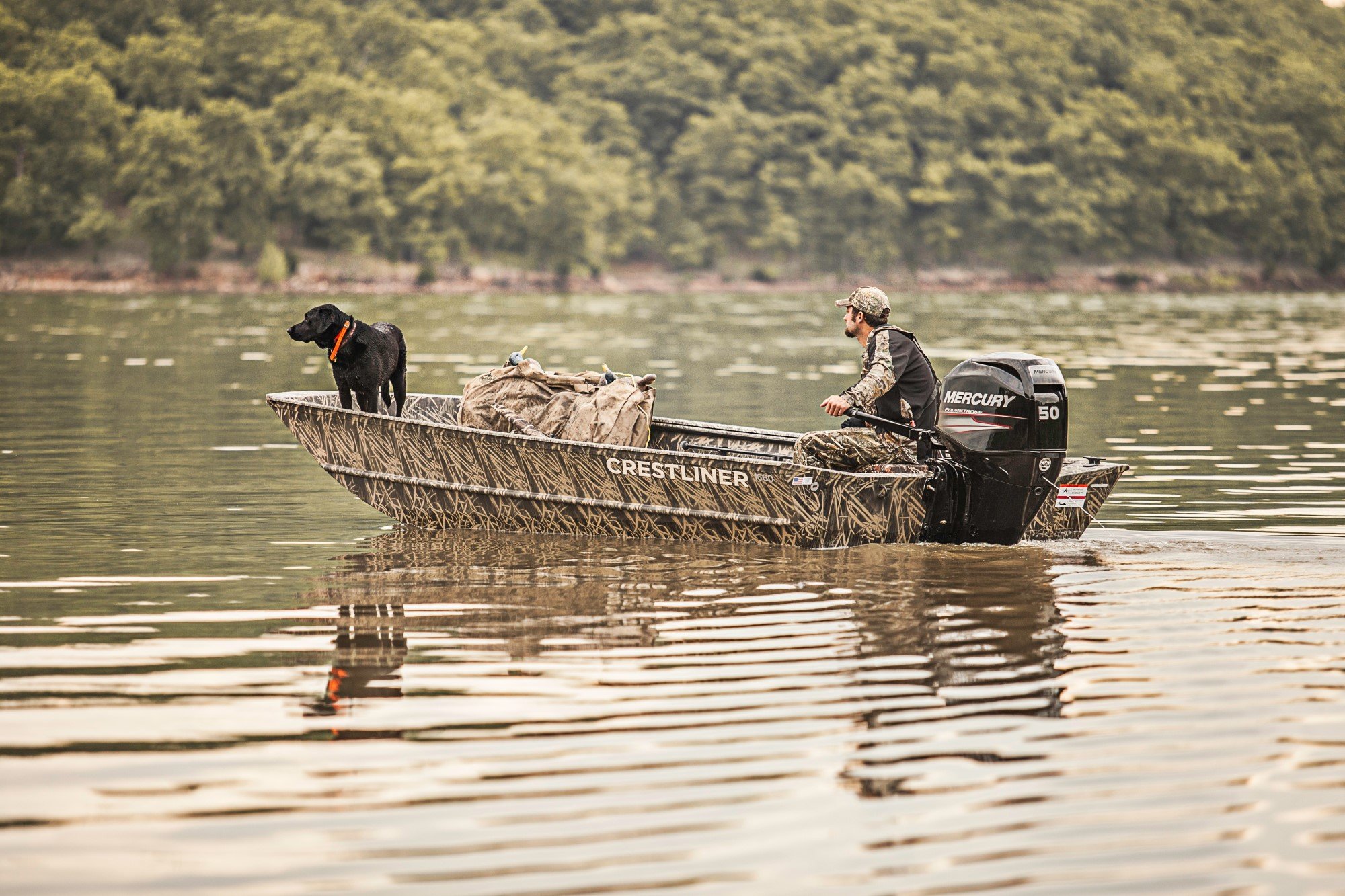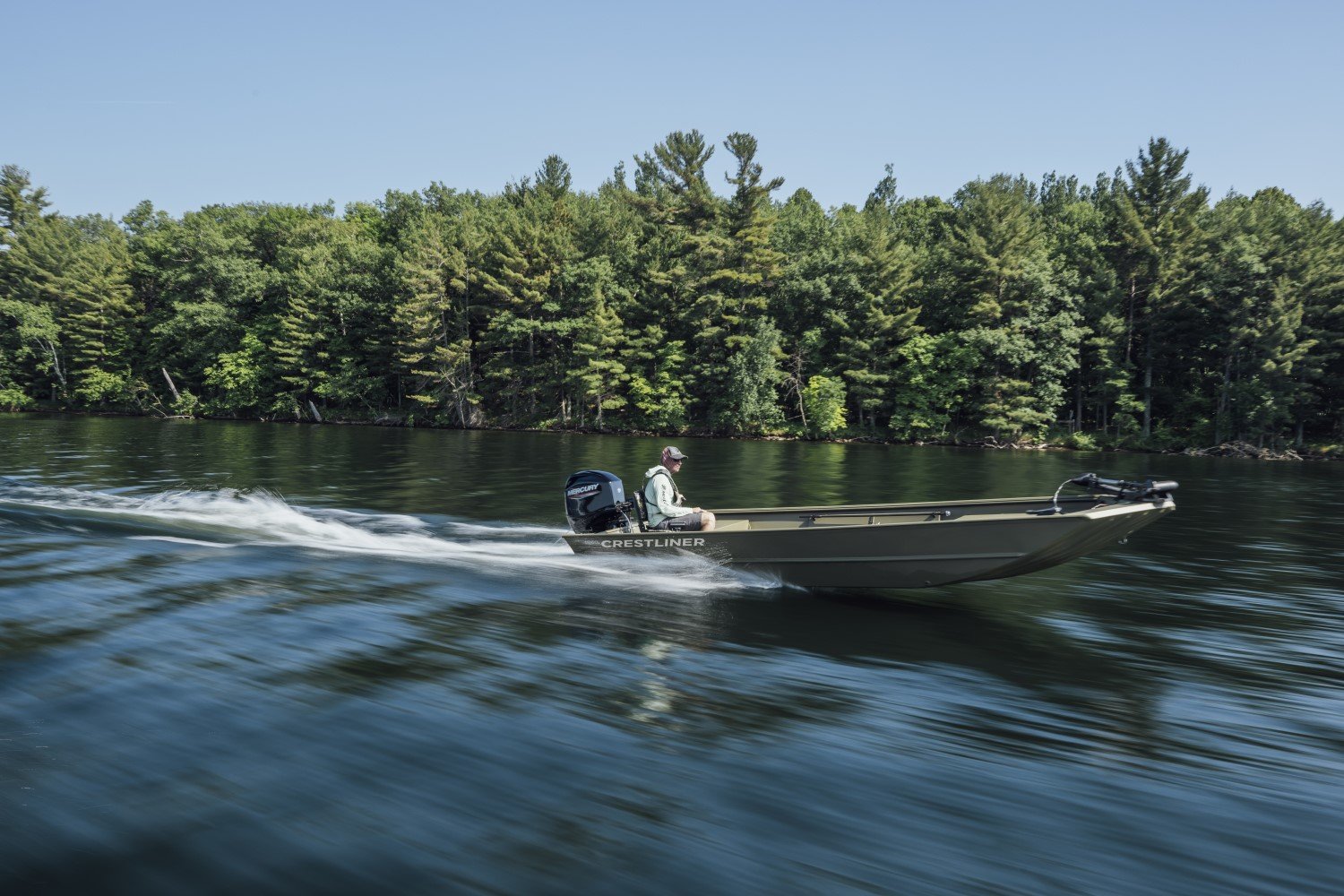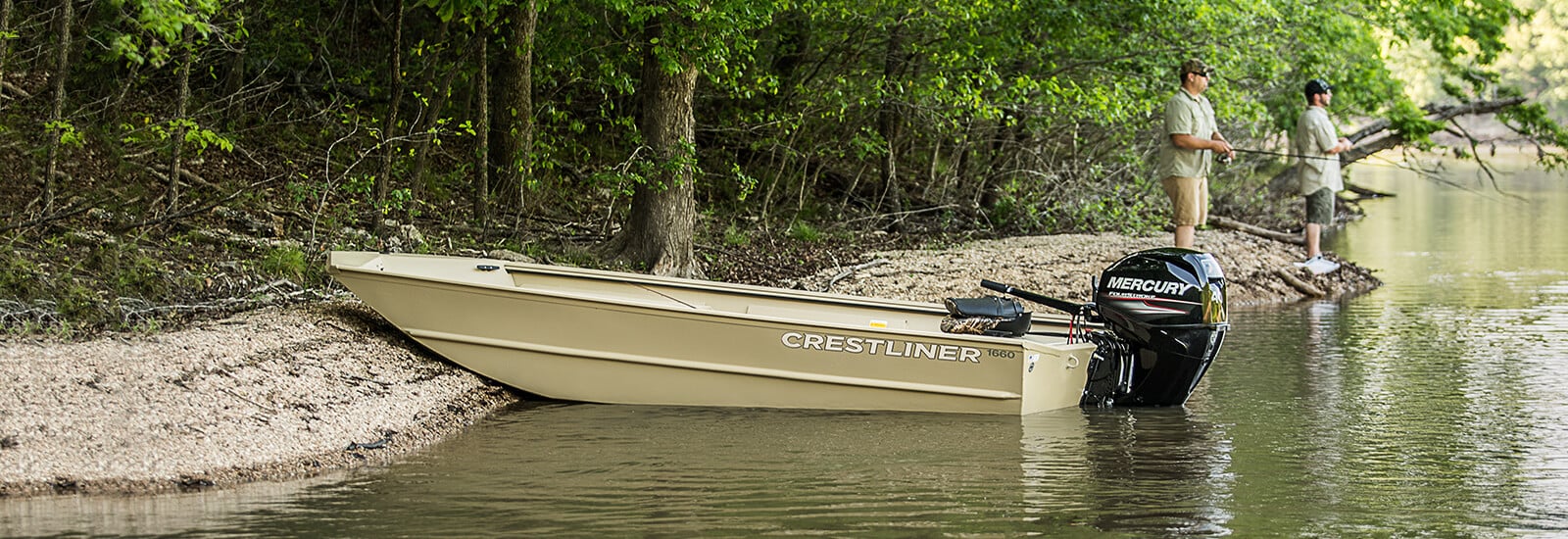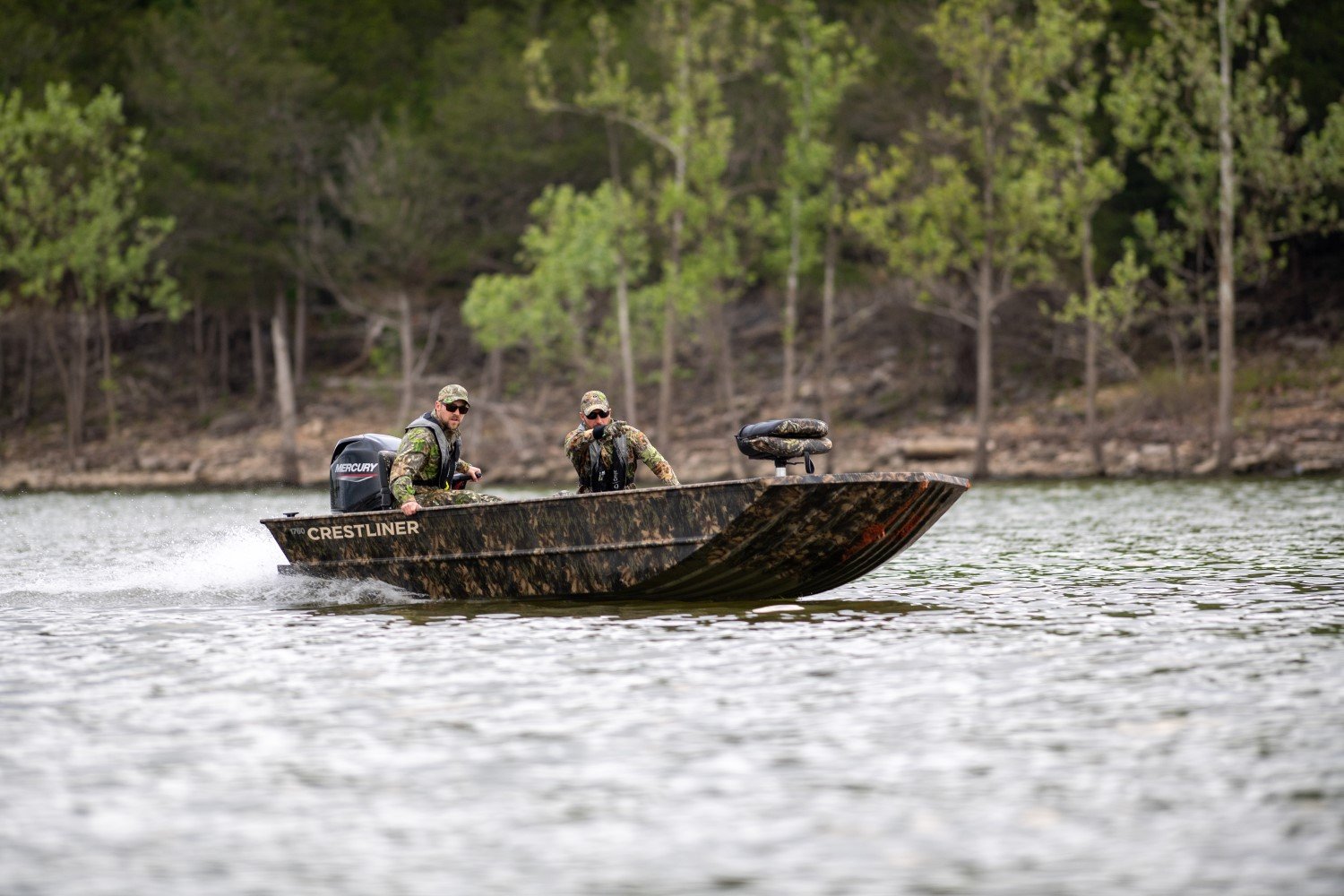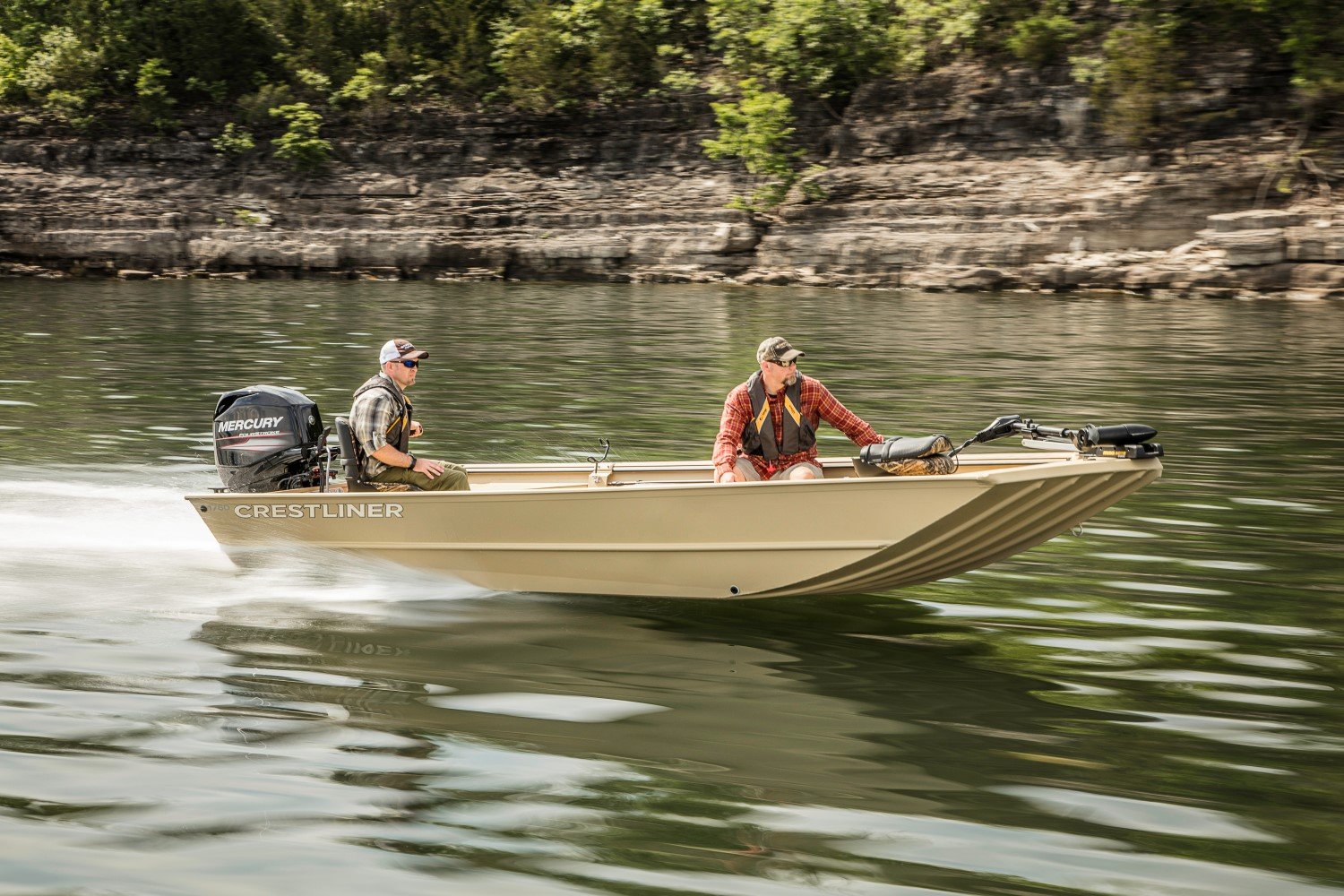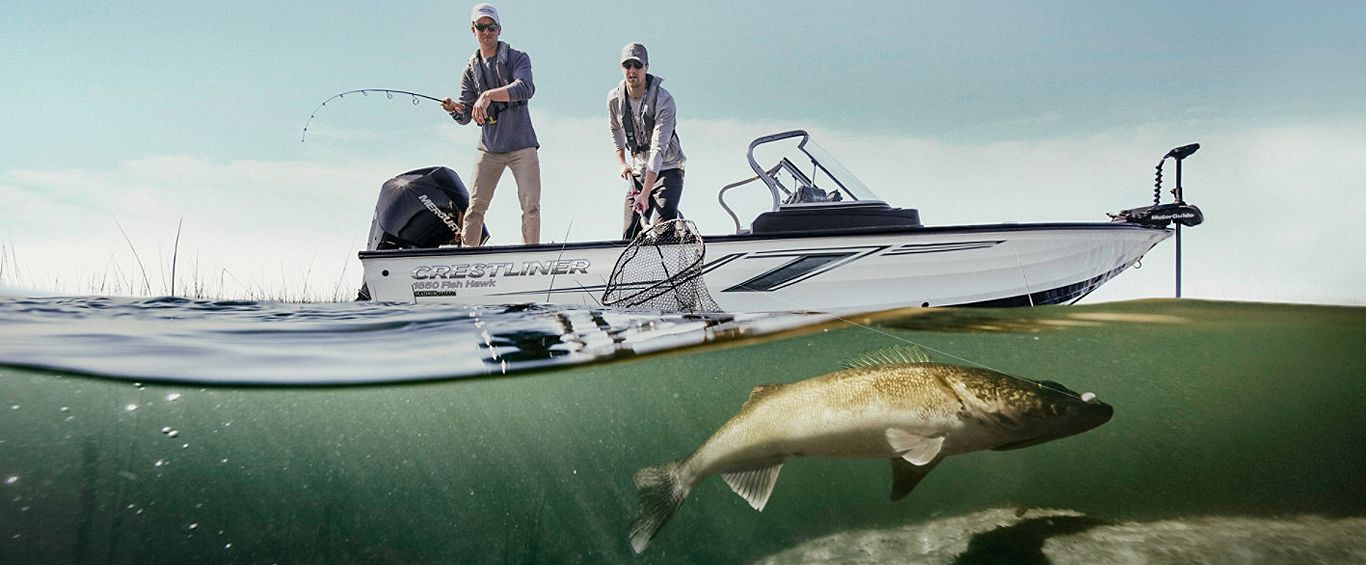Walk the aisles of any tackle shop and you’ll see rack after rack of monofilament fishing line, fluorocarbon fishing line, and braided fishing line.
Virtually every one of those lines claims to have “superior” abrasion resistance, but you’ll also see speculation that monofilament is more abrasion-resistant than braid, and that fluorocarbon (which is a type of monofilament but is made with a specific type of fluoropolymer) is more abrasion resistant than regular monofilament.
Testing abrasion resistance
We all know that abrasion resistance can be a critical factor, especially if you position your Crestliner fishing boat to cast around jagged structures that your line will likely be rubbing against. So, how are you supposed to sort out the marketing claims from the truth? There’s only one sure way to do it: Test abrasion resistance for yourself.
Our process
We took a rusty old wreck anchor and dragged samples of fishing line across it, then measured the post-abrasion breaking strength of each. We selected multiple brands of each type of fishing line in a 20-pound test.
The end of each sample, one by one, was tied to a hand scale, and two pounds of pressure was applied as the sample was stroked for eight inches across the rusty anchor. Then the line was pulled against the scale until it broke to measure its breaking strength. The experiment was repeated three times for each line then the results were averaged together, to eliminate any accidental variations in the test or variations in the spool of line.
What we found
Interestingly, the breaking strength didn’t change by any noticeable amount when comparing brand to brand. What was far more illuminating, however, was that line type had a dramatic effect on the results. Across the board, the rumors about mono versus braid proved true: monofilament did in fact display better abrasion resistance than braid. The monofilament and fluorocarbon both broke at an average of 19 pounds of pull, yet the braid snapped off with an average of 17.4 pounds of pull.
Wait a sec — we all know that braid is stronger than monofilament of equal diameter, so what gives? Remember, monofilament fishing line of any type is made of a single filament. Braid, however, is made up of multiple filaments that are woven together. Since braid has less diameter than monofilament in the first place, and then each individual filament is just a fraction of that diameter, the incredibly thin fibers are more easily damaged by physical friction despite the fact that the line can stand up to far more tension prior to any abrasion.
Our takeaway
Braid line has a lot of enviable traits in addition to its extra tensile strength, such as little to no stretch and superior sensitivity. This susceptibility to greater abrasion damage, however, is a strong argument for using a monofilament or fluorocarbon leader at the end of your braid mainline any time you’ll be fishing around structure or targeting toothy fish.

